

How to Move Your Pet From the US to the UK: A Step-by-Step Guide
When they are choosing to travel to the United Kingdom, most people choose to travel solo, with people, or even with their pet. Bringing your pet to the U.K can be a lot of fun- you can walk the streets of London and eat the famous fish and chips together, hike along the Thames, or even walk along the White Cliff of Dover together.
Here are the seven steps that you will need to move your pet from the U.S to the U.K:
- Make sure that your pet is allowed by the company you are travelling with
- Get the necessary tests and vaccinations for your pet
- Obtain a health certificate for your pet from your veterinarian
- Obtain a pet passport
- Fill out the Declaration Form
- Pick your mode of transportation that you feel is best for you and your pet
- Double-check that you have everything you need to travel with your pet
But before going out on your trip, you have to make sure you have everything in order with your pet, or else they can be held in quarantine, which won’t be pleasant for either your or your pet.
Disclaimer: Hi! this post may contain affiliate links which will take you to online retailers that sell products and services. If you click on one and buy something, I may earn a commission, see my Affiliate Disclosure for more details.
You have to make sure that your pet is healthy enough to travel for long hours, have the right documentation, and you have to make sure that your pet is going to be comfortable.
If you are planning on travelling to the United Kingdom and you don’t want to leave your furry friend behind, here is a step-by-step guide to helping you move your pet across the world comfortably.
Disclaimer: You should seek professional advice if you are unsure about how to move your pet to the UK. Go to GOV UK to check if there have been any changes to pet immigration.
1# Make Sure That Your Pet is Allowed
Unfortunately, not all pets are considered “pets” when it comes to international air travel. Most airlines will also only accept cats, dogs, and ferrets as pets that can travel on their planes. Therefore, pets like rabbits, hamsters, guinea pigs, or rats won’t be allowed to travel with you.
If you do have pets that can’t fly with you, you will have to find someone to watch them for you while you are away, such as a family member, a friend, or a pet sitter.
Some airlines and boats also don’t accept any pets at all. Therefore, you should always with the companies that you are planning to travel with to make sure that they even allow pets.
If you are planning on traveling with multiple pets, you should expect to pay extra fees. Typically, you will only be allowed to travel with up to five pets. However, some airlines will only let you bring one on board.
2# Get Your Pet the Necessary Tests and Vaccinations
Before you embark on your adventures with your pet in the United Kingdom, you have to make sure that they are healthy enough for traveling and meet all of the U.K’s pet health standards. Your pets will have to get tested by a veterinarian for various diseases and illnesses. If they do have an illness, they have to get treated and be disease-free for several months before your trip.
It’s important to get all of these done in advance because if you do not get your pet the proper tests and vaccinations, they can be held in quarantine for up to four months and you can be charged with fines.
Before you send your pet and yourself off to the U.K, you have to get them tested for tapeworms because they are an infectious disease . Your vet will have to analyze their stool in order to test them and to make a proper diagnosis.
Even though you need a vet’s diagnosis to treat tapeworms, you can typically notice the symptoms in your pet yourself. They will typically notice your pet scooting and rubbing their behinds on the ground, licking or biting at their behinds, or they are visible in their stool.
Tapeworms are incredibly common, especially in puppies, are extremely easy to get treated. If your pet has tapeworms, your veterinarian will prescribe a medication, called praziquantel, either orally or in a shot for them to take. Typically, it will take about a week to completely cure the tapeworms. However, some pets may need a second dose three weeks after.
Because it takes some time to cure it, it’s important to do this as early as possible before your flight. If you put off the vet visit until right before your trip, you may have to postpone it if they have to get treated because they can not travel unless they are completely cured.
In addition to tapeworms, you should also get your pet tested for any other illnesses to make sure that they are healthy and ready for the trip. The last thing that you want is to make an unexpected stop at a vet while you are on vacation.
Vaccinations
In addition to getting tested for illnesses, your pet has to take some preventative measures. Your pets also have to get vaccinated for rabies before you take your trip . Rabies can be a very serious and deadly disease, and it’s important that your pet doesn’t have it before coming into contact with other people and animals.
It is a good idea to get your pets rabies vaccination a month before you make your final arrangements because you are required to wait 21 days prior to the vaccination.
Aside from getting them the proper tests and vaccinations, it is also a good idea to get your pet fitted with a microchip before transporting them to the United Kingdom.
A microchip is an implant that acts as an identification for your pet. Despite what most people believe, it isn’t a tracking device. Microchips omit a radio frequency that can be scanned to show information on the pet.
The microchip will have information like your pets name, your name, and your contact information. If your pet ever gets lost, this way someone will be able to identify your pet and contact you. The procedure for the implant is quick and painless for your pet. You can get the microchip implanted at most local vets or animal clinics.
Not all microchip readers will be able to read every kind of microchip, especially if it’s across the world. When you are getting your microchip, make sure that it is compatible with microchip readers in the United Kingdom.
It’s understandable to want to know where your pet is, especially if you are in a foreign country for the first time. Som if you are looking for a way to track your pet’s whereabouts, there are some collars that have GPS’s in them. These collars can be pretty expensive, but they are worth the extra buck for the reassurance of knowing where your pet is.
3# Health Certificate
In order for your pet to fly with you to the U.K, you will have to have documentation of all of the shots, tests, and microchips that you have for your pet. You can get this health certificate signed by your vet. The health certificate will prove that your pet is free from any infectious diseases and is healthy enough to fly.
The health certificate will confirm that your pet has received all of the needed vaccinations and has been treated for anything recently. You should travel within 10 days of the certificate being issued and will only be valid for up to four months.
The airport will ask to review the health certificate before you get on the plane and will not allow your pet to travel if you don’t have the documentation or it isn’t up to date. It is a good idea to make extra copies to keep with you in your luggage just in case.
4# Pet Passport
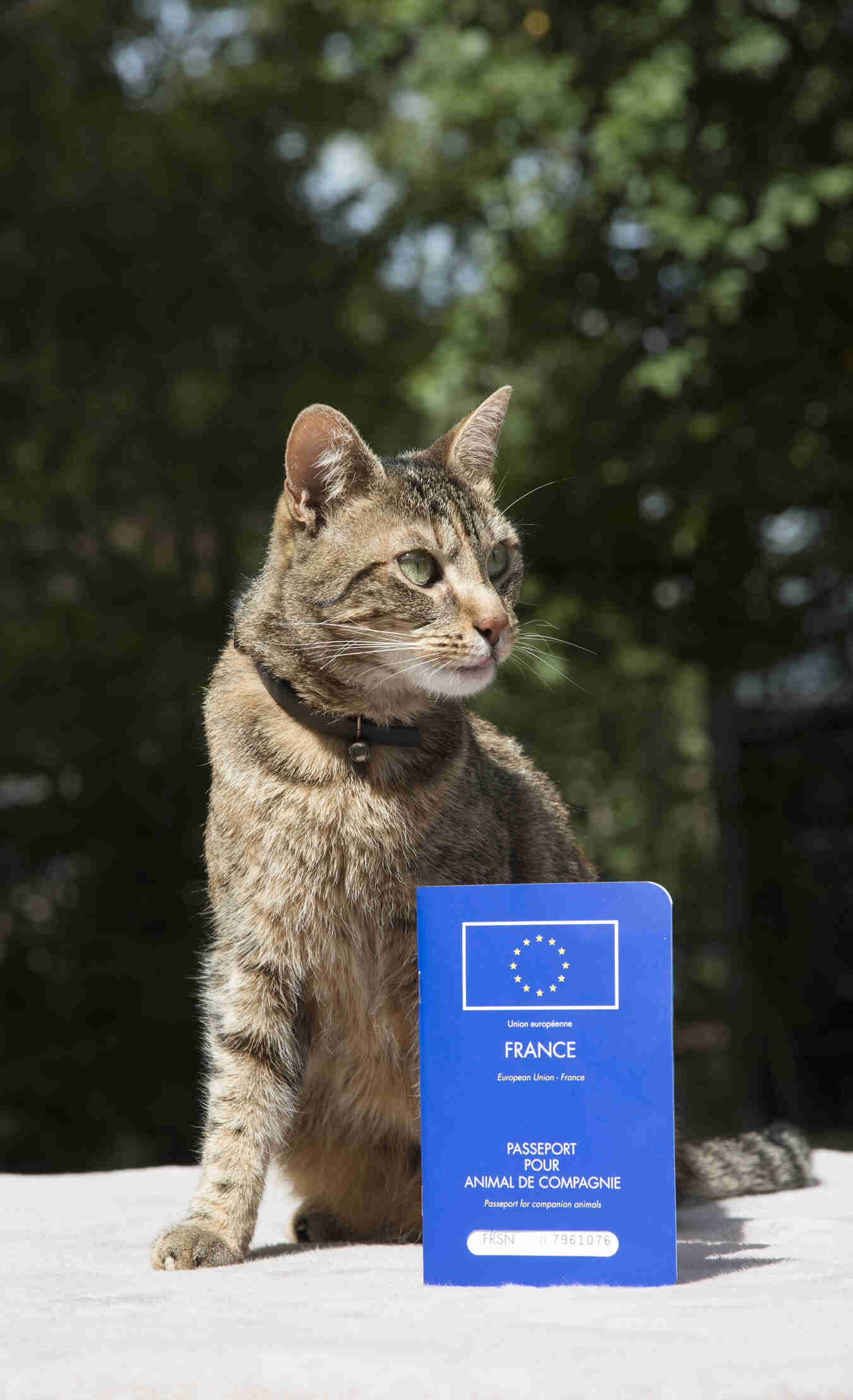
Just like how people need a passport to travel internationally, so do your pets. A pet passport is essentially the same as a typical passport, but it includes a little more information about your pet, including:
- Your name and contact information
- A full description of your pet
- Microchip information
- Proof of vaccinations
- Proof of tapeworm test and treatments (if applicable)
Typically, you can get your pet passport for your vet. If for some reason your vet does not provide pet passports, you can see if they can refer you a vet nearby that does, or you can contact the United States Department of Agriculture, Animal and Plant Health Inspection Service (USDA APHIS) .
5# Declaration Form
Before you leave for your United Kingdom trip with your pet, you also have to fill out a Declaration form which states that you aren’t bringing your pet into the U.K for commercial purposes and prooves that you are the owner . This means that you aren’t planning on selling your pet while in the United Kingdom. You can find the form here .
6# Pick Your Mode of Transportation
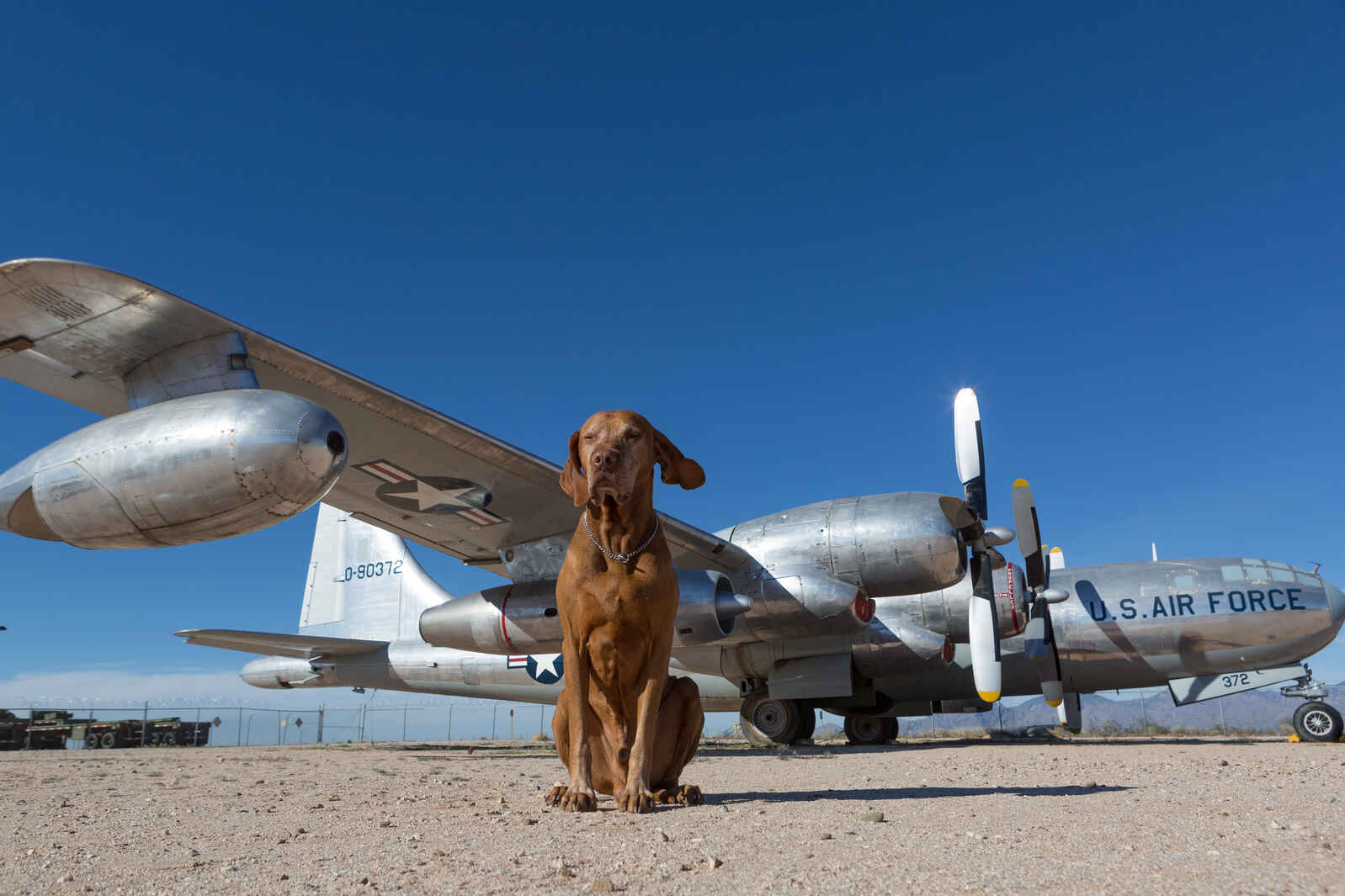
There are a few ways that your pet can be transported to the United Kingdom, but it is ultimately up to you with what method you choose. If you are traveling from the United States to the U.K, the only ways that you have your pet transported are by plane or by boat.
You can find a list of airlines that accept pets on their planes here , and you can find a list of ferries and cruises here . If you want to take a different airline or a different company, you can always call and ask what their policies for pets are.
Each mode of transportation has different policies and procedures for handling your pet while you travel. Do your research and see which way to travel would be best for you and your pet. You can also contact the companies that you are considering to travel with and ask them what their specific procedures are.
7# Double-Check
Before you leave, you should double-check that you have all of the documents that you need for your pet and even some copies, just in case. The very last thing that you want is to be turned away for not having all of your needed documents.
Because the rules and regulations for importing pets into the United Kingdom, be sure to double-check with the website for United States Department of Agriculture, Animal and Plant Health Inspection Service (USDA APHIS) for updated regulations. Since the U.K is composed of multiple countries, it is also good to double-check the requirements for the country you are landing in as they may be different from others.
How Will Your Pet Be Transported?
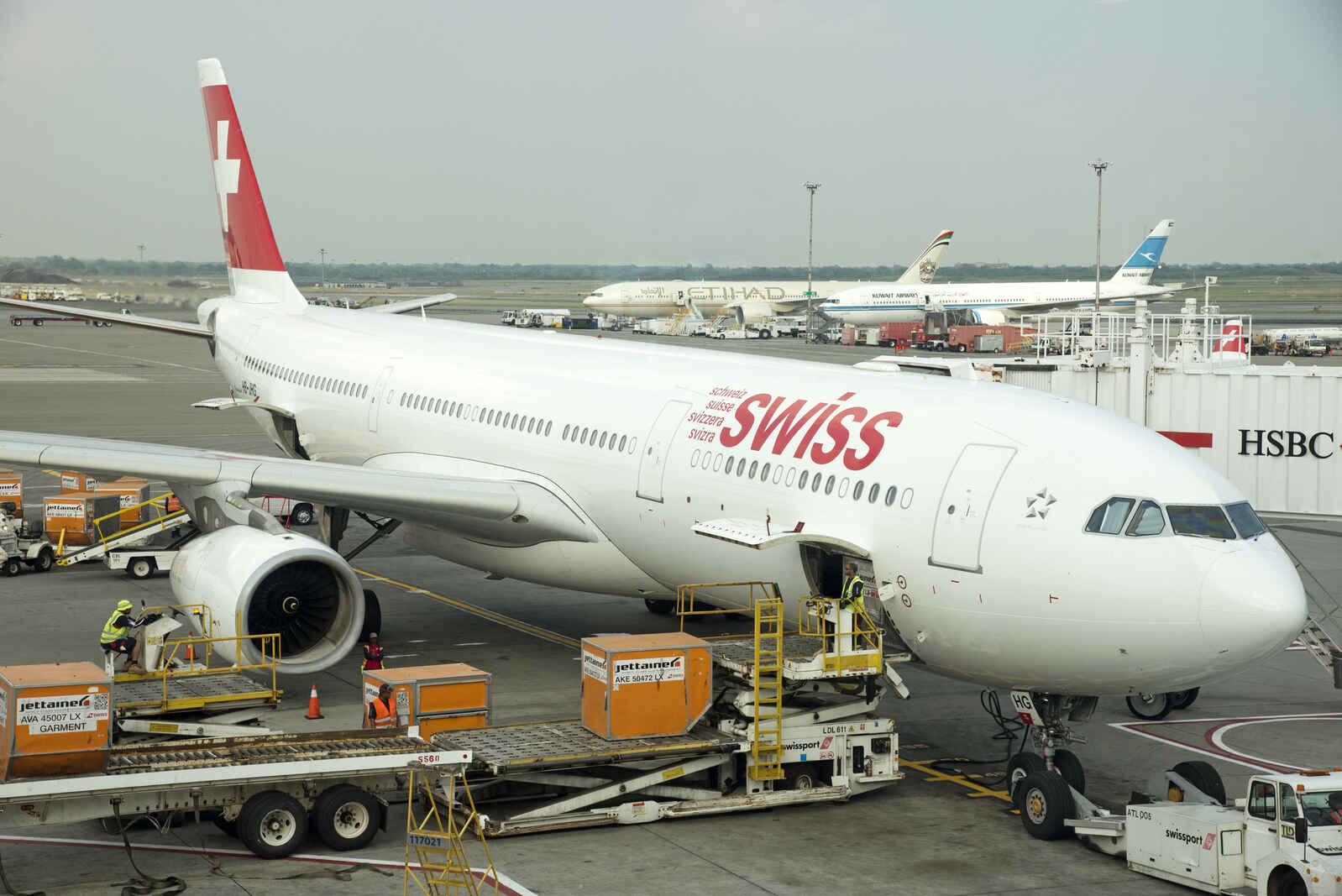
Whether you decide to travel in a plane or on a boat to the United Kingdom, there are a few different ways that your pet will be traveling. Because these options aren’t always ideal, you should really consider how your pet will be traveling and treated before bringing them on a trip.
Here are a few ways that your pets can be transported:
The Cargo Hold
If you decide to travel with your pet on the plane, they will most likely be put in the planes cargo hold. They don’t get bathroom breaks or any sort of comfort during their ride. This kind of environment can be really unsettling for them because they will most likely be around other nervous pets, loud sounds, and will be alone.
Luckily, the pilot can control the temperature of the plane, so your pet doesn’t get overheated. Before the flight, the pilot is informed about the cargo and any pets on board. However, you should double-check with them to make sure that the pilot does know about your pet.
Some airlines even bring your pet’s water during the flight, or they will allow you to put water and food for them in their carriers. However, neither is guaranteed so you should call your airline and ask what their procedures are.
If you are allowed to provide them with food and water, the best ways to do this is with clip on food and water dispensors so they don’t fly around during the flight.
Your pets carriage will not be with the rest of the luggage, so you don’t have to worry about them getting thrown around or hurt. A planes cargo hold has a special section that securely holds pet carriers.
Can You Bring Your Pet in the Plane Cabin With You?
If you don’t want your pet to be transported in the cargo cabin, some airlines do let your pets fly with you in the cabin. Unfortunately, there are restrictions on how big your pet can be. Typically, they have to be able to fit into a carrier small enough to fit in a seat. Therefore, larger dogs will have to be flown in the cargo cabin of the plane.
Most airlines also only let a certain number of dogs in the cabin, so it is a good idea to book your dogs spot as far in advance as possible. You should also expect to pay a fee to have your pet in the cabin with you. Most airlines can charge at least $500 extra for a one-way trip.
Ship Kennel
If you are choosing to travel with your pet by a cruise ship, your pet will most likely have to stay in the ship’s kennel. Much like a planes cargo hold, the kennel is located within the boat and hold the passenger’s pets. Your pet would have to stay in their carrier with limited bathroom breaks and time out of the cage. Some cruises also let you check in on your pet.
However, some cruise lines do allow pets in private cabins, but they typically charge an extra fee. Ideally, you would rather your pet be in the room with you and not in a carrier for the duration of your trip. Therefore, you should contact your cruise line and see what options they offer.
How to Make Your Pet More Comfortable for the Trip
Having your pet travel internationally can be a very nervous situation for them. Depending on where you leave within the United States, it can be at least an 11-hour flight to the United Kingdom. Even though this may be a trip of a lifetime for the both of you, your pet’s comfort should be a priority.
Here are some ways to make your pet more comfortable on the long trip over to the U.K:
Direct Flights
To reduce the amount of stress that your pet will be put through, you should try to get a direct flight to the United Kingdom, if possible. Long flights and layovers may be too stressful on your pet, so minimizing the number of hours traveling is better for your pet. Even though it may be more expensive to find direct flights, it will be better for your pet’s well-being in the long run.
Airlines don’t typically take pets out of the cargo hold during layovers, and they can also get misplaced, just like luggage. In case something like this happens, you should also attach tags with your contact information on the crate and around your pet’s neck with a collar.
Pick the Right Season
Even though pilots can control the temperature in the plane, they can’t control the climate outside. It may not be a good idea to travel with your pet in the summer because they could potentially overheat. If you can’t have your pet with you in the cabin where you can monitor them, then it may not be a good idea to travel with high temperatures.
Because of the same reasoning, most airlines will not let you bring pets onboard during certain times of the year. Especially when you are traveling from a colder place to a much hotter place, it is important to consider how comfortable your pet will be while traveling with these temperatures.
A Comfortable Carrier
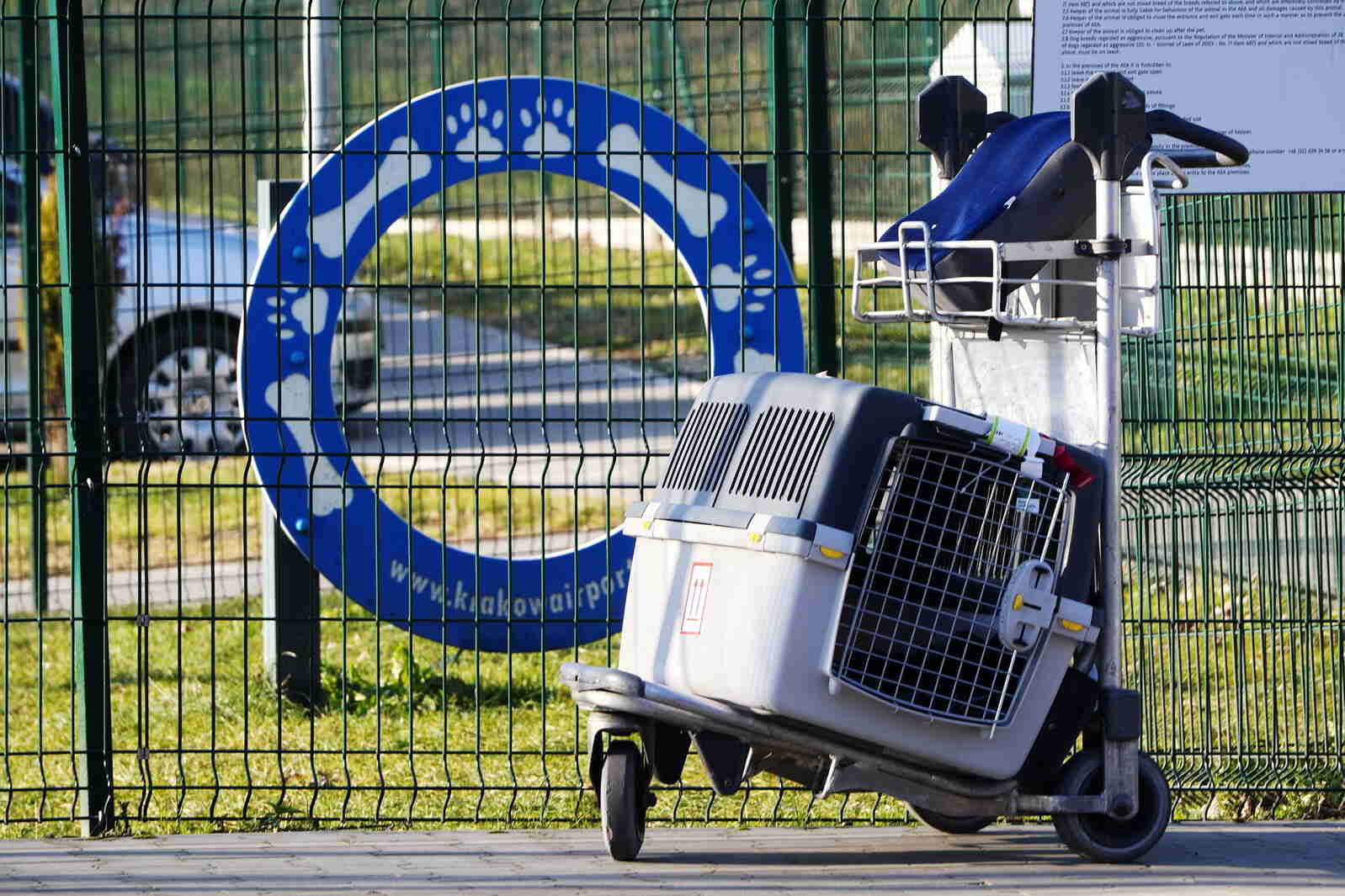
If you do get the opportunity to have your pet on the plane with you, make sure you get a carrier that is comfortable enough for them. The ideal carrier for a plane ride is one that fits the allowed sizes but also leaves some room for your pet to move around and for you to put some treats and food in there.
Unfortunately, if your pet is travelling in the cargo hold of a plane, they will most likely have to be in a gated carrier. However, you can make it more comfortable by adding some padding, like a bed and pee pads, and also add in some of their favourite toys to keep them entertained.
Line the Carrier with Absorbent Pads
Even though your pet may be house-trained, with the stress of a plane ride and the long flight, there may be some accidents. The nerves from flying could also upset your pet’s stomach, which could induce accidents. You can play it safe by lining the carrier with absorbent pads, like the brand DryFur.
You should also sprinkle some deodorizer, like baking powder, in the carrier so if there is an accident, you and the people around you won’t have to smell it until the flight ends.
To help prevent any unwanted accidents from happening on your flight, don’t feed your pet the morning of and cut off their drinking water two hours before the flight. This way, your pet won’t feel the urge to go while they are on the flight.
Once you get on the plane and your pet gets a little more comfortable with the flight, you can give them water in increments. You don’t want your pet to dehydrate, but you also don’t want any accidents, so watch how much water you give them and how often.
If you start to notice that your pet does have to go, take them into the plane bathroom with you and with a pee pad and try to get them to go there. It may take them a little while to go because they aren’t used to the environment, but it is definitely worth the patience, so they don’t go in the carrier. Make sure to clean up after your pet when you are finished.
Because they will most likely be anxious during the trip, be sure to give your pet lots of attention and reassurance. Even though most airlines probably won’t let you take your pet out of their carrier during the flight, you can still open it a little bit and give them a quick pet to reassure them that everything is okay.
Most airports won’t let you bring in food or drinks before you go through security, but you may get away with bringing treats. Feeding them their favorite treats in moderation throughout the flight would be a great way for them to feel more comfortable.
Most airlines won’t do frequent check-ins with the pets in the cargo hold, so they will be lonely most of the time. If this is important to you, then you should see about having your pet with you in the cabin.
If you decide to travel by boat to the United Kingdom with your pet, you should aks your cruise about their policies on visiting your pet in the kennel. If you are allowed, try to visit them as frequently as possible so they don’t feel so alone.
During your visits, play with them and pet them and make them feel loved. Even though your cruise may be fun, don’t cut your visits short. This is a scary time for them, so having you there makes the trip much easier.
You should always use sedatives as the last resort for keeping your pet calm and comfortable during the flight. Sedatives should only really be used with extremely nervous pets and you should only give your pet a sedative with the okay from the vet. Your pet may have some health problems that could react badly with this kind of treatment.
There are some sedatives that won’t completely put your pet to sleep but will calm them down for the flight. Now there are CBD oils and treats for nervous pets, but you should also check with your vet before giving them to your pet. However, sedatives should be the last resort because they can have some adverse side-effects, such as breathing problems and dizziness.
What About Service Animals?
Service animals are, without a doubt, allowed to travel with you, even in the cabin of a plane. In fact, it is very common to have emotional support animals with them when they are flying because of how stressful it can be.
Even though they are service animals, they do still have to have the proper tests and vaccinations in order to fly. When you go to the airport to board on your plane, make sure you have the proper identification for your service animal, including their vest and the proper documentation.
More Resources for Moving to the UK
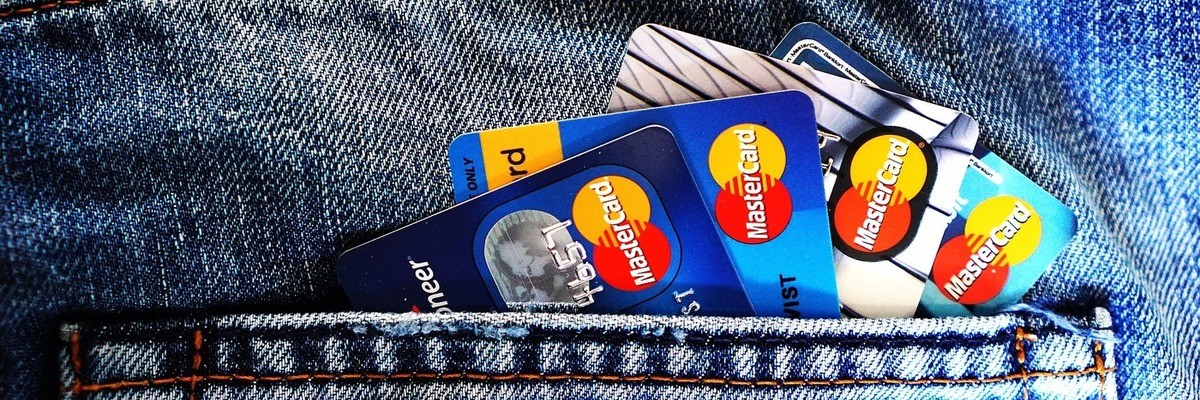
How to get a UK Bank Account Before Moving to the UK
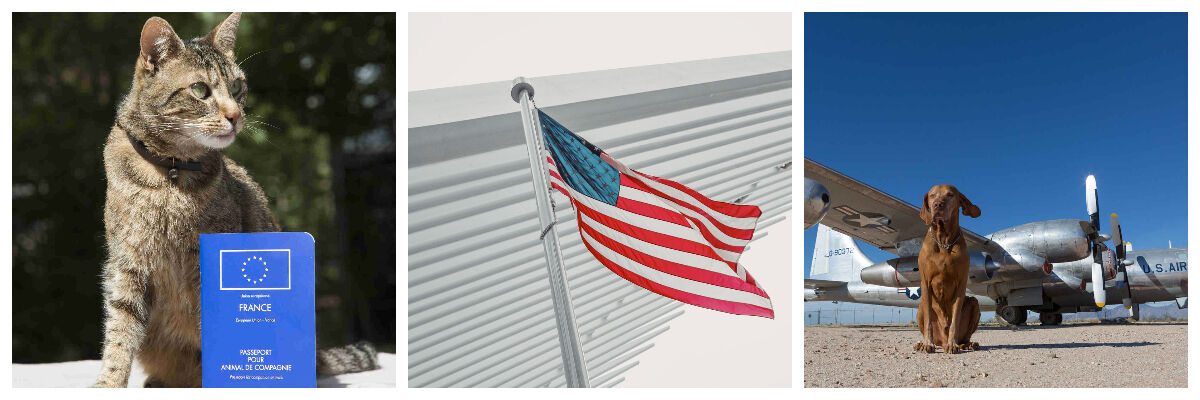
Moving to the UK from the US: Step by Step Guide

Kat Hi, I'm Kat, an Australian that moved to London in 2013 to start a new adventure. What a roller-coaster that was! I love helping others move to the UK and people explore the world ! I’d be honoured if you’d say, “Thanks!” with a £3 coffee on Ko-fi.

This site uses Akismet to reduce spam. Learn how your comment data is processed .

Everything You Need to Know About Moving Cats and Dogs to The UK
Comprehensive guide: moving cats and dogs to the uk.
The United Kingdom is a popular destination for pet travel, so it's important to understand the rules and requirements for importing pets to the UK. While there is no quarantine for cats and dogs in the UK if the import steps are followed correctly, planning a safe and smooth move for your pet can be a delicate process. Follow these guidelines to ensure your pet's safe and happy journey to the UK.
Pet Import Requirements for the UK
The UK is a rabies-free country, so the import requirements must be strictly followed to prevent quarantine upon arrival. The order in which these requirements must be completed is:
- Microchip (implanted and scanned before rabies vaccine administration)
- Rabies Vaccination and Certificate (at least 21 days old before final vet visit)
- Rabies Antibody Titer Test (if coming from an "unlisted country")
- EU Health Certificate (Annex IV)
- Tapeworm Treatment (for dogs only)
- Endorsement of Paperwork
.png)
Other Considerations for Pets Entering the UK:
- Pets should ideally arrive in the UK on a one-year rabies vaccine or a three-year vaccine in its first year of validity. If your pet is in the second or third year of their valid rabies vaccine, you must provide additional records to prove that your pet's rabies vaccine has never lapsed since their most recent one-year vaccine. Most pet owners find it easier to get a new vaccine before traveling.
- The UK requires pets to be covered under a “Transfer of Residency” (ToR) declaration to avoid Customs VAT upon arrival. To be clear, a ToR number is not required to import your pet into the UK. However, you will need to pay the Customs VAT if you do not have a ToR number at the time of your pet’s arrival. You can read more about the new rabies requirements and the ToR updates here .
Health Certificates and USDA Endorsement
For export from the United States to any foreign country, your pet must have a country-specific health certificate issued by a USDA-Accredited Veterinarian. This health certificate must be sent to your state’s USDA office for endorsement. It must be issued within 10 days of travel and endorsed by the USDA . Ask your veterinarian if they have the proper USDA accreditation. Failure to do so could result in extra time and expenses associated with additional appointments and testing. If you are working with a PetRelocation coordinator, we will work closely with your veterinarian to meet all complicated requirements.
Estimated costs for endorsement : Up to five pets can be be documented on one international health certificate. If you are traveling with more than five pets, you will incur costs for two endorsements. Currently UK health certificates are $38 USD per endorsement.
Crate Training and Traveling as Manifest Cargo
Pets traveling into the United Kingdom may only arrive as manifest cargo . This is for your pet’s safety and accountability. This means it’s important to start acclimating your pet to their travel crate early and practice crate training often. If your pet is a very large dog , you may need a custom crate built to accommodate their size in manifest cargo.
Estimated costs for manifest cargo airfreight: Fees range from $1,000 USD (Chihuahua) to $4,500 USD (Great Dane).
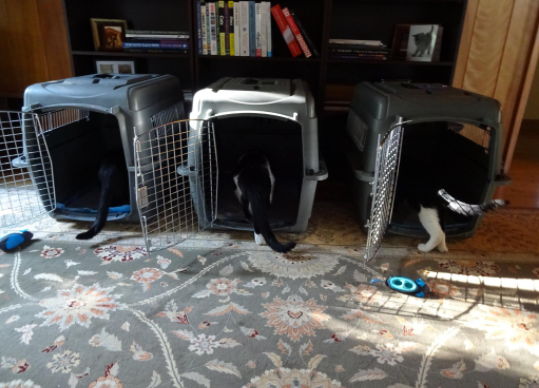
Scout, Sammy and Jo traveled to Scotland with PetRelocation
Estimated costs for manifest cargo airfreight : Manifest cargo flights for pets are based on dimensional weight (or how much space your pet takes up in the aircraft). For international flights, these fees can range from $1,000 USD for a Chihuahua and up to $4,500 USD for a Great Dane.
Commercial vs. Non-Commercial Pet Travel
Pet owners must travel to the UK within five days of their pet’s arrival to avoid the move being labeled as a “commercial” shipment. This is often called the "5-day rule" and applies to all countries in the European Union. If you cannot travel within five days of your pet, you can still send them a commercial health certificate. However, the timeline will be tighter, and a tax will be imposed upon your pet's arrival.
Commercial pet moves require a health certificate to be completed (and endorsed by a government entity) within 48 hours of the pet’s departure. If you don’t have a government office (like a USDA office in the United States, for example) nearby, you may need to consider having your pet depart from a different city to make the short timeframe work.
Once your pet arrives in the UK as a commercial movement, you will be expected to pay at least 44 GBP or more, depending on the size of your pet, in additional DEFRA taxes. Also, considering the stricter requirements, the arrival process for a commercial move may take longer than for a non-commercial move.
Leaving the UK with Pets
To leave the UK with your pet, you must follow the pet import requirements for your destination country before departure. Also, depending on what country you are traveling to, you may need to obtain an export certificate from DEFRA.
Even if there is only a slight possibility that you will return to the UK, we recommend contacting a veterinarian to issue an EU Pet Passport before leaving the country. Furthermore, it may be a good idea to have the vet in the UK also administer a Rabies Antibody Titer Test if you plan on traveling to an unlisted country. That way, you can avoid the 3-month wait period upon your return to the United Kingdom.
Do you have questions about moving your pet to the UK that we did not cover above? Let us know how we can help! We know planning a pet move to the UK can be an overwhelming experience -- contact us to have our UK team manage the details for you.
Travelling with pets
We know your pets are part of your family, which is why we treat every animal who flies with us like a VIP.
British Airways flights
Emotional support dogs
British Airways is unable to accept emotional support dogs for travel in the cabin on any British Airways operated flights. Your emotional support dog can travel as a pet and details on how to arrange this can be found below.
Service dogs
If you’re travelling with a recognised service dog, it can travel with you free of charge in the cabin of your British Airways flight. This service cannot be booked online and we might need to limit the number of dogs we can carry in the cabin.
From the UK
We’ve partnered with PetAir UK, which is run and owned by fully-qualified veterinary surgeons and has been flying pets all over the world since 2004, to offer British Airways customers a safe, comfortable and convenient way to export their pets from the UK.
If you are looking to transport your pet to the UK, our sister company IAG Cargo can help. They have decades of experience transporting animals from every corner of the globe and will look after your pet as if it were their own.
Pet Travel Scheme
If you're entering the UK, your dog must meet the requirements of the Pet Travel Scheme offered by the UK Department for Environment, Food & Rural Affairs (DEFRA). It allows cats and dogs to travel between some countries and UK airports avoiding quarantine.
If you're travelling to a different country, please check with the relevant embassy or consulate for any regulations or restrictions.
SUN-AIR flights
SUN-AIR is our franchise partner operating flights within Europe under the British Airways brand. As on British Airways operated flights, recognised service dogs are allowed in the cabin, as well as other pets up to 6kg.
- Other pets must be transported in a waterproof bag or cage, with maximum dimensions of 20 x 30 x 20cm (7.5 x 11.5 x 7.5in).
- It is the owners’ responsibility to ensure that all documentation and animal passports are in order before departure.
- SUN-AIR permits one pet on board each aircraft at one time.
Please contact the SUN-AIR ticket office on +45 75 33 16 11 no later than 72 hours before departure if you wish to bring your pet on a SUN-AIR operated flight. Please note that pets are not permitted on SUN-AIR flights to the United Kingdom.
You are using an outdated browser. Please upgrade your browser to improve your experience.

- Choosing a cat
- Preparing for a cat
- Buying a kitten
- Adopt a cat FAQs
- What is our adoption fee?
- Our history
- Annual Review
- Meet the trustees
- Structure, governance and management
- Corporate partners
- CATS report
- Cats Protection blog
- Campaigning
- Financial assistance
- Grief and loss
- Cat Guardians
- Thinking about giving up your cat?
- Getting a cat
- Neutering, vaccinations and microchipping
- Pregnancy and kitten care
- Cat behaviour
- Behaviour Guide
- Lost, found and feral cats
- Cats and your family
- Home and environment
- Seasonal advice
- For vets and nurses
- Online learning
- Sponsor a cat
- Lottery and raffle
- Volunteering
- Volunteer opportunities
- Gifts in wills
- Pledge form
- Giving in memory
- Become a member
- Challenge events
- National Cat Awards
- Corporate partnerships
- Philanthropy
- The Cat magazine
- Fundraise for Cats Protection
- Work for us
- Online gift shop
- Shop with our partners
- Hide & Sleep®
- Find a shop
- Find the National Cat Centre
- Give us your feedback - we're all ears!
Travelling with your cat
Need to take your cat on a trip by car, taxi, or train? Or perhaps just need some advice on how to travel long distance with a cat? Read our guide on making travelling as easy and stress-free as possible for you and your cat.
Travelling with cats
Choosing the right cat carrier when travelling, how to get your cat used to a carrier for travel, what to bring when travelling with your cat, how to get your cat used to travelling in a car.
- Tips for travelling long distance with your cat
Travelling with your cat by taxi
Travelling with your cat by train or bus, how long can cats travel without going to the bathroom, what is motion sickness in cats.
We know that most cats find travelling stressful. They feel safe in a familiar environment and are not used to the different smells, noises and sensations of travelling in a vehicle. Even the sight of the pet carrier being taken out can stress some cats because they associate it with a sign of an upcoming trip.
It is best to only take your cat on trips if absolutely necessary, but some journeys, like going to the vet or moving to a new place, may be unavoidable.
If your cat gets very stressed when travelling, speak to your vet as they can discuss further options.
Find out more about spotting signs of cat stress .

One of the first things to prepare before travelling is to have a cat carrier that is safe and comfortable.
It should be well-ventilated and made of sturdy material such as plastic or metal wire that is also easy to clean in case of any accidents.
While some cats prefer being in small spaces when frightened, it’s important to choose a carrier that’s the right size for your cat, so they can stand up and move around if needed.
Learn more about how to choose and use a cat carrier .
To help your cat feel more comfortable, get them used to the carrier at least a few days before the trip. Place the carrier in a room where they like to relax and leave it open so they can explore and get to know it better in their own time. You can also put in their familiar blanket and add some treats.
For more nervous cats, a pheromone spray like FELIWAY® can be used inside the carrier around 15 minutes before going on a trip.
When going on a short trip with your cat such as to the vet, apart from having them in the carrier you can also bring their favourite toy or blanket.
For longer road trips, you should take the following to ensure your cat has everything they may need:
- cat carrier and soft bedding
- food and bottled water
- litter box, familiar litter and waste bags
- puppy pads (to line the carrier or place under a blanket)
- pet-safe cleaning wipes and disinfectant
If your cat hasn’t travelled in a car before, introduce them to travel gradually. Start with a short trip and go on a slightly longer journey the next time.
Your cat may be loud and meowing excessively. This is a sign of stress, but they should settle down eventually. You can show them attention and help them calm down a little by talking to them gently and reward them with treats when the journey is over.
Can I drive with my cat loose in the car?
To keep everyone safe, your cat should be kept in their carrier at all times when driving. Leaving your cat loose in the car can be a distraction and put you at risk of an accident. To secure the carrier, it’s best to put it on a backseat and fasten it with a seat belt.

Tips for travelling long distance in a car with your cat
- Book a routine vet check to make sure your cat is healthy for travel
- Unless you’ve been told otherwise by your vet, try to limit food for at least a few hours before the journey to avoid vomiting and reduce motion sickness
- Plan your journey route and breaks in advance. Don’t leave your cat unattended in the car, especially in hot weather . If travelling alone, limit to only essential short breaks and make sure inside the car is well-ventilated and the temperature is comfortable for your cat
- If possible, avoid travelling with your cat for more than four hours in a day and let them out in a room where they will spend the night. For longer journeys, aim to take regular breaks every two to four hours to give you a chance to check up on your cat
There may be situations when you need to go to the vet urgently or take your cat somewhere quickly, and if you don’t have a car, a taxi can be a good option.
As for taxis, whether or not you can travel with your pet depends on the taxi company or driver. Some companies may charge extra to bring a pet. Depending on your location, there may be a pet-specific taxi service in the area.
Before booking, make sure the taxi driver will accept travelling with pets. You will also need to keep your cat inside the carrier for the duration of the trip.
If you’re wondering whether you can take your cat on a train, you should know that in the UK each passenger is allowed to travel with up to two pets, free of charge.
If you want to take your cat on a bus, the bus driver may decide at their discretion whether you are allowed on with a pet, depending on how busy the bus is and whether there are other animals on board.
Other things to be aware of when travelling on a train or bus are the many different smells, unfamiliar faces, and other animals, all of which can scare your cat. You can try booking a ticket outside of peak hours and, if possible, find a quiet place during the journey. Do not leave your cat unattended, and keep the carrier close to you. Throwing a light blanket over the carrier can help prevent overstimulation but ensure there is adequate airflow.
When travelling by public transport, you should keep your cat in a carrier throughout the trip.
On average, cats with no underlying health issues urinate two to four times daily and poop about once a day.
However, being in an unfamiliar environment such as in a car is stressful for your cat so they might hold in their urge to go to the bathroom. But sometimes they are not able to hold it and will need to use the litter box right away.
If you notice that your cat suddenly becomes extremely loud and shows signs of distress or wanting to get out, it might be the time you will need to let them use the litter box. It’s advisable to avoid letting your cat in and out of the carrier frequently but, if needed, have the litter box ready next to them and let them use it once you stop for a break.

Motion sickness is a common occurrence in many cats. There can be several causes, but the most common cause of motion sickness in cats is anxiety and stress associated with travel. If your cat experiences this, you may notice the following symptoms:
- fast breathing or panting
- excessive lip licking and drooling
- increased vocalisation and meowing
- lethargy or inactivity
If you see any of these signs, you should let your vet know so they can do a physical exam to rule out any health issues or advise you on ways to manage your cat’s anxiety when travelling.
Although desensitising cats to travel can take some work and patience, over time your cat should become more comfortable when going on a trip.
Related topics
Foreign travel and cats
Moving home with your cat
Going on holiday without your cat
Pet Travel - Can I Bring My Dog With Me to the UK?
:max_bytes(150000):strip_icc():format(webp)/FerneArfin-5b6f00c446e0fb0050324e74.jpg)
The withdrawal of the United Kingdom from the European Union (a move known as "Brexit") formally occurred on January 31, 2020. Following that departure is a transition period lasting until December 31, 2020, during which the U.K. and E.U. will negotiate the terms of their future relationship. This article has been updated as of the January 31st withdrawal, and you can find up-to-date information about details of the transition on the U.K.'s government website .
Yes you can bring your dog, cat or ferret into the UK without having to park them in quarantine. You just have to follow a few important rules. A lot of people still think that if they bring their pets with them into the UK they'll have to put them into a quarantine kennel for six months. Old ideas die hard. It's actually much easier, and kinder for pets and their owners, these days.
The Pet Travel Scheme, known as PETS, has been in effect in the UK for more than 15 years. It's a system that permits pet travel to the UK. Dogs, cats and even ferrets can enter or re-enter the UK from qualified EU countries and non-EU "listed" countries . Listed countries include named non-EU countries in Europe and elsewhere. Pet travel from the USA, Canada, Mexico , Australia and New Zealand are included.
In a change from the old quarantine regulations, pets that comply with the PETS rules for EU countries can enter the UK without quarantine from almost anywhere in the world. There are just a few exceptions and extra waiting periods.
What pet owners must do
Preparing your animal for pet travel under the PETS scheme is not complicated but you need to plan ahead and get the process in the works well ahead of time - at least four months if you are traveling from outside the EU. Here is what's required:
- Have your pet microchipped - Your vet can carry this out and it is not painful for the animal. It must be done first, before any inoculation. If your dog has been inoculated against rabies before being microchipped, it will have to be done again.
- Rabies vaccination - Have your pet vaccinated against rabies after being microchipped. There is no exemption from this requirement, even if the animal already had been vaccinated.
- Blood test for pets entering from outside the EU - After a 30-day waiting period, your vet should test your animal to make sure that the rabies vaccination has succeeded in giving sufficient protection. Dogs and cats entering from and vaccinated within EU or non-EU listed countries do not have to have a blood test.
- The 3-week/3-month rule The first time your pet is prepared to travel under the PETS system, you must wait three weeks before you can travel and return to the UK if you are coming into the UK from an EU or listed country. The day of the vaccination counts as day 0 and you must wait a further 21 days. If you are traveling to the UK from an unlisted country outside the EU, your pet must have a blood test 30 days after the vaccination (with the vaccination day counting as day 0) and then wait a further three months after the valid blood test before the animal can enter the UK.
- PETS Documents Once your animal has passed all the required waiting periods and has had a valid blood test, if that is required, the vet will issue PETS documentation. In EU countries, this will be an EU PETS Passport. If you are traveling to the UK from a Non-EU country, your vet must complete a Model Third Country Official Veterinary Certificate which you can download from the PETS website. No other certificate will be accepted. You must also sign a declaration stating that you do not intend to sell or transfer ownership of the animal.
- Tapeworm treatment Just before you enter the UK, your dog must be treated against tapeworm. This must be done not more than 120 hours (5 days) before entering the UK and not less than 24 hours. This treatment must be carried out by a licensed vet every time your pet enters the UK. If your dog does not have this treatment during the required period, it can be refused entry and placed into a 4 month quarantine. Dogs entering the UK from Finland, Ireland, Malta and Norway do not have to be treated for tapeworm.
Once you've fulfilled all the requirements, your animal will be free to travel to the UK as long as rabies vaccinations are kept up to date.
There are some exceptions. Pets coming to the UK from Jamaica must be prepared for travel under the PETS requirements in a different country, outside Jamaica. Special extra requirements apply to cats coming to the UK from Australia and for dogs and cats arriving from Peninsular Malaysia.
What else should I know?
Only certain carriers are authorized to transport pets under the PETS system. Before you make your travel arrangements, check the list of authorized carriers for air, rail and sea travel to the UK. The authorized routes and transport companies can change or may only operate certain times of year so check before you travel. If you don't arrive via an approved route, your pet may be refused entry and place in the 4-month quarantine.
What You Can & Can't Bring Into Canada
How to Travel to Denmark With a Dog
How to Travel Internationally With Your Pet
How to Travel to Finland With a Dog
How to Travel to Sweden With a Dog
Pet Birds and Air Travel
Eurotunnel - Driving "Le Shuttle" Through the Channel Tunnel
What to Know About French Customs Regulations
Taking a Dog to Norway: Rules and Regulations
With So Much Red Tape, Are You Sure You Want to Travel With Your Pet?
Traveling with Pets in Germany
Travel to Mexico With Your Pet
Taking a Pet Ferret on an Airplane Flight
Traveling With a Pet to Hawaii
Tips for Traveling With Dogs or Cats to Italy
Is Thailand Ready to Reopen Its Borders to Tourists?
What you need to know about United Kingdom pet travel

Transporting pets to the United Kingdom is tricky, but not impossible. Below, you'll find our guidelines and advice for sending pets to and from the U.K.
A pet shipper or broker is a must for dogs, cats and ferrets
If you’re sending a dog, cat or ferret to the U.K., you’ll need to secure a pet shipper or broker to handle the process in the U.K. Pet shippers are well-versed in the policies, regulations and documentation to move your pets anywhere in the world. You are also welcome to transport reptiles, fish, amphibians, insects and crustaceans into the U.K. with proper documentation:
- You can find a list of pet shippers and brokers at IPATA.org .
Requirements for pet travel to the UK from EU countries
- Either a Pet Passport or the Annex IV document with fully completed veterinarian and owner details are required for cats, dogs, and ferrets.
- If your pet is tattooed, ensure a licensed veterinarian has recorded the tattooing date (including the tattoo number) and the date of the rabies vaccination which is stated in the Annex IV document or the Pet Passport.
- If your pet is microchipped, ensure its microchip was implanted either on the same day or prior to the rabies vaccination.
- The Non-Commercial Pet Declaration form (this is also located in the Annex IV document)
- Ensure all dogs were treated against tapeworm with a treatment containing Praziquantel as the active ingredient no less than 24 hours and no more than 120 hours (5 days) before arrival in the U.K.
Requirements for pet travel to the UK from non-EU countries
- Pet owners transferring residency to the U.K. from non-EU countries should apply for Transfer of Residence relief (ToR1) in advance.
- Complete and submit a copy to Her Majesty's Revenue and Customs at [email protected] .
- This form is a requirement, even for students.
- For animals traveling into the U.K. from a U.S. port, a maximum of two (2) adult animals of comparable size, up to 20 pounds (9 kgs) each, and who are accustomed to cohabitation, may be transported in the same container. In addition, animals up to six (6) months old and from the same litter (up to a maximum quantity of two) may also be shipped in the same container.
Understanding the taxes and fees for pet travel to the U.K.
The U.K. requires most pets traveling to the country pay the Value Added Tax, or VAT. The formula for estimating this cost is:
Value of animal + Cost of transport + U.K. VAT adjustment [£100.00]) = VAT valuation @ 20% of total
Here's what you need to know about paying the VAT, depending on your situation:
- U.K. residents returning to the U.K. after visiting a non-EU country are not required to pay the VAT. However, they will be asked to provide proof of residency, and proof that the pet exited the U.K. This can be shown either with the export AWB or the customs entry document.
- Non-EU residents visiting the U.K. with pets will be required to pay customs VAT on arrival. This can be re-claimed on proof of exit from the U.K.
- Any animal that has been owned for less than six months or has been gifted, purchased, rescued, etc. will be subject to import tax upon arrival to the U.K.
- In addition to the VAT, please note that there are additional fees to be collected in the U.K.
- The Heathrow Animal Reception Center (HARC) charges £260 per AWB
- £177 to transport your pet to the quarantine station
- £83 to collect your pet from the aircraft
- Each additional pet on the same AWB is £41
- The Manchester Animal Reception Center charges £100 per pet, plus an import fee of £0.165/kg with a minimum of £36.
- Airline handling fees and customs clearance fees will also apply.
To learn more about bringing your pet to the U.K., visit this helpful site on GOV.UK .

Required pet documents
- Acknowledgment form (ENG)
- Acknowledgment form (ESP)
- Acclimation letter
- Breed verification form
- Commercial shipper vet form
Helpful pet resources
- Know before you go
- Pet guidelines
- Breed restrictions
- Mastiff breed restrictions
- Aircraft type restrictions
- Vacation Rentals
- Restaurants
- Things to do
- Things to Do
- Travel Stories
- Rental Cars
- Add a Place
- Travel Forum
- Travelers' Choice
- Help Center
Traveling from the USA to the UK with a cat...Please help - Traveling with Pets Forum
- Tripadvisor Forums
- Traveling with Pets Forums
Traveling from the USA to the UK with a cat...Please help
- United States Forums
- Europe Forums
- Canada Forums
- Asia Forums
- Central America Forums
- Africa Forums
- Caribbean Forums
- Mexico Forums
- South Pacific Forums
- South America Forums
- Middle East Forums
- Honeymoons and Romance
- Business Travel
- Train Travel
- Traveling With Disabilities
- Tripadvisor Support
- Solo Travel
- Bargain Travel
- Timeshares / Vacation Rentals
- Traveling with Pets forum

However, I have been reading other people's stories where they have flown into Paris (where cats can fly in the cabin) and travel to London that way. However, Eurostar does not allow cats so I would have to find a way to London from Paris by car !! This process is so stressful and confusing. Please someone help me. What is the most cost-efficient/safe way to get my cat from LA to London?

Please dont stress, there are a number of options you can do.
https://pethelpful.com/dogs/flying-with-pets-in-cabin-to-UK
you can use blablacar which is a car sharing service.
https://www.blablacar.com/
You could take the train to Calais,
https://www.seat61.com/dogs-by-train.htm
then use a taxi to get across by tunnel. Folkestone Taxis provide this service, other companies probably do too.
http://www.folkestonetaxi.com/Pet+travel+abroad.html
Some ferry companies allow pets with foot passengers
https://www.gov.uk/government/publications/pet-travel-approved-air-sea-rail-and-charter-routes-for-the-movement-of-pets/pet-travel-sea-routes-and-companies-you-can-use
You could sail from New York to the UK on Cunard, its less costly than you would think
https://ask.cunard.com/help/cunard/fleet/kennel_info
So you see, there are plenty of options for you, you just need to do some research and see what suits you best and take some costings
Also, there is already a long thread about this, plenty of info in there too
https://www.tripadvisor.co.uk/ShowTopic-g1-i26969-k10314196-o30-Flying_my_dog_from_USA_to_U_K_Please_help-Traveling_with_Pets.html

This topic has been closed to new posts due to inactivity.
- Flying Pitbull to Puerto Rico Jun 03, 2024
- Dog in UK with EU passport travelling to France Jun 01, 2024
- Flying with a cat from Manchester airport to Turkey Jun 01, 2024
- Traveling to Nova Scotia with dog May 30, 2024
- Bringing your dog into the US, new rules starti Aug 1, 2024 May 28, 2024
- Requirements to take dog on flight within the USA May 25, 2024
- Flying from Turkey to the UK with Two Cats May 24, 2024
- Got a dog over lockdown....don't want to leave him behind ! May 22, 2024
- Dog May 18, 2024
- Pet stops en route May 16, 2024
- Travelling to/from Morocco with dogs May 08, 2024
- Travelling with a dog in cabin AirFrance! May 07, 2024
- UK to France with EU DOG Passport May 03, 2024
- Pets allowed May 02, 2024
- Where Do I Find Info About Bringing A Dog Into The United States
Pet Travel UK: Moving to the UK with your pet

- 10 January 2022
Moving to the UK with a pet
For many of us, the idea of leaving to start a new life in a new country without taking a beloved pet is as absurd as leaving without taking a family member. Yet, with a number of rules and regulations, it isn’t always as easy as slipping your furry friend into your holdall and boarding a plane.
If you’re moving to the UK and want to bring your pet along, these are certain things you need to keep in mind. Whether it’s pet travel from the US to the UK or pet travel from the EU to the UK, it can be a confusing process to the uninitiated. So let us take a look at how to move to the UK with your pet and what you will have to do before stepping down with your two feet and your favorite four-legged friend.
Can you bring your pet to the UK?
1- what pets are allowed into the uk.
When it comes to bringing pets into the UK, there are certain criteria depending on the type of animal you wish to bring. Common pets such as cats and dogs are permitted, along with pet ferrets. Although, this is all dependent on you having the correct health and documentation requirements for that particular pet.
There are also a number of dog breeds that are banned within the UK, so these will not be permitted to enter the UK. If you are wondering about how to import a puppy into the UK, you must obtain a non-commercial UK health certificate for the UK completed by a licensed veterinarian. It must be issued within ten days of entering the UK.
When you are planning on bringing other animals in, these regulations will all depend on whether you are bringing them in from inside the EU or from outside of the EU. There are no restrictions on bringing pet rodents, rabbits, invertebrates, amphibians, or reptiles to Great Britain from EU countries. Yet, if you are bringing in a pet bird, you will need to present a health certificate.
When it comes to bringing in pets from outside the EU, the rules on what pets are allowed are slightly different. If you are bringing in pet rabbits or rodents, then you will need to quarantine them for four months when you arrive. You can usually bring in pet invertebrates, reptiles, and amphibians without any health certificates. You must have a signed declaration from the owners saying the animals are not for sale, able to complete the journey, and are fit and healthy.
2- Maximum number of pets you can bring
The maximum number of pets you can bring into the Uk is five. The only time you can break this rule is if you are attending or training for a competition, show, or sporting event. If this is the case, then you will need written evidence of registration for the event when you travel. Also, all the extra pets must be attending the event, be over six months old, and meet the general travel rules. You will also need to fill in a declaration that you are adhering to all these rules. If you are importing more than five pets that are not attending these events, this will fall under more commercial animal breeding or trade rules, which doesn’t constitute a pet.
3- Quarantine requirements
Quarantine rules and requirements are not what they used to be in the UK. It was once standard practice to quarantine pets, especially cats and dogs, in kennels for a six-month period. Now, the Pet Travel Scheme, known as PETS, means that as long as you adhere to the rules of the Pet Travel Scheme, then quarantine isn’t required.
The Pet Travel Scheme permits pet travel to the UK. Dogs, cats, and ferrets can enter or re-enter the UK from qualified EU countries and non-EU “listed” countries. These listed countries include some non-EU countries in Europe and elsewhere in the world. Pet travel from the USA, Canada, Mexico, Australia, and New Zealand are also included.
The rules you need to follow to avoid quarantining your pet consist of having your pet microchipped, having a rabies vaccination, having tapeworm treatment, and if coming from outside the EU, a blood test after 30 days to ensure the rabies inoculation has succeeded in giving sufficient protection.

4- Banned dog breeds
Sadly, there are a number of dog breeds that are banned in the UK ; these dogs won’t be permitted to enter the country. The four banned dog breeds are:
- Pit Bull Terrier
- Japanese Tosa
- Dogo Argentino
- Fila Brasileiro
5- Guide and Assistance dogs
Guide and Assistance dogs are permitted to enter the UK and will be treated under the same regulations as other pets. This means you will need to have an Animal Health Certificate, have a microchip, be vaccinated against rabies, possibly blood tested, and be treated for tapeworm.
Find more info on pet travel from the US to the UK here .
Again, not adhering to this may mean your dog will be denied entry or put into quarantine at the owner’s expense. Guide and assistance dogs, unlike pet dogs, are also permitted to travel with their owners in the cabin of the aircraft with UK, European, and most international airlines.
You can find up-to-date info on pet travel to the UK on the official site .
Main requirements for pet transport to the UK

1- Microchip
When you are considering how to import a dog into the UK, you must ensure you follow the requirement of microchipping them. Pets who are not microchipped can be refused entry to the country. You must get your pet microchipped before, or at the same time as, their rabies vaccination. If you do not, they’ll need to be vaccinated again.
If you travel by air, train, or ferry on approved routes, staff will check your microchip if it meets International Organization for Standardization (ISO) standards. If the microchip in your pet doesn’t meet these standards then you may have to bring your own microchip reader when you travel.
If the vet is unable to read your pet’s microchip, you may have to rechip your pet, revaccinate your pet, take new blood tests if you’re traveling from a country that is not ‘listed’, issue a new pet passport or health certificate, and/or record the old and new microchips in the ‘Marking of animals’ section of the new passport.
2- Vaccination and health certificates
Before you can think of how to move to the UK with your pet, you will need to ensure they have the correct vaccinations and health certificates. This will include rabies vaccination; this can only be done by a qualified vet, who will also need proof that your pet’s at least 12 weeks old before vaccinating them.
If you are bringing a pet from a non-listed country, then your pet must have a blood sample taken at least 30 days after the rabies vaccination. Your vet must then send the blood sample to an EU-approved blood testing laboratory from either inside the EU or outside the EU. This vaccination should be recorded on your health certificate. It must include the vaccine manufacturer and product name, the vaccination date, and the date it is valid until.
3- Tapeworm treatment
Another treatment that must be carried out and recorded in your health certificate is the treatment of tapeworms. The treatment must have been given no less than 24 hours and no more than 120 hours (5 days) before you enter Great Britain. Your dog can be refused entry or put into quarantine if you do not follow this rule. If you are entering the UK from Finland, Ireland, Northern Ireland, Malta, or Norway, you will not have to treat your dog for tapeworms.
4- Pet travel document or passport
For entering the UK with your pet, you will need to ensure you have a pet passport, as well as your own. Pet passports list the different treatments your pet has had, the details of the pet, and its markings. You can get the pet passport from a vet authorized to issue them in most countries. If your vet does not issue pet passports, ask them for the nearest one that does or contact the Animal and Plant Health Agency.
When you secure your pet passport, you must take with you your pet, your pet’s identity, vaccination records, and rabies blood test results if your pet needs them. You can also ask your vet to issue a Great Britain pet health certificate, though your pet must arrive in Great Britain within ten days of the pet health certificate being issued.
5- Requirements for pet travel from the EU
If you are traveling with your pet from the EU, then you will not need an animal health certificate if you have a pet passport issued within the EU. There are also different regulations for the type of pets you can bring into the UK if you are traveling from the EU. There are no restrictions on bringing pet rodents, rabbits, invertebrates, amphibians, or reptiles to Great Britain from EU countries. This also means they will not need to present a health certificate for these types of animals.
When bringing in your pet from the EU to the UK you will need to have one of the following documents. Either a pet passport issued in an EU country, a pet passport issued in a Part 1 listed country, or a pet passport issued in the United Kingdom issued before January the 1st 2021, as long as the journey is a direct one, from one EU nation to the UK.
6- Requirements for pet travel from the US
If you are concerned about how to move to the UK with your pet from the USA, it is slightly different from that of traveling with your pet from the EU. Similarly, you will need to ensure your pet is individually identified by an ISO-compliant microchip.
Coming from the US, you will also need either a USDA Accredited Veterinarian or a Military Veterinarian to issue you a UK Health Certificate. A Military Veterinarian is defined as a Veterinary Corps Officer or civilian series government veterinarian employed by the U.S. Army Veterinary Service working at military treatment facilities. After the pet’s USDA Accredited Veterinarian has completed and signed the EU/UK Health Certificate, have the pet’s completed health certificate endorsed by your USDA APHIS Veterinary Services Endorsement Office.
6- Requirements for pet travel from other countries
Pet travel from other countries, one’s that are known as unlisted, will have to go through the whole works. You must ensure your pet is microchipped under the standards expected by the UK government. Your pet must also be vaccinated against rabies. There is no exemption to this requirement from unlisted countries, even if your pet has a current rabies vaccination.
Once your pet is vaccinated for rabies, a blood sample must be taken at least 30 days after the vaccination. You cannot enter the UK until three months after the date your vet took a satisfactory blood sample. Unique documentation will also be needed, which means you will need to obtain an official third-country veterinary certificate. It is also important to remember that if you are traveling from an unlisted country, you must travel on an authorized route and with an approved transport company.
How much does it cost to import a dog into the UK?
With all the procedures, paperwork, and the excitement of moving to the UK with your pet, the cost of doing such a thing may pass you by. Most of the dog’s moving budget will undoubtedly be spent on airline coasts.
Due to the extra care and attention the animal will need during the flight, tickets for dogs are likely to be more expensive than regular passenger ticket prices. The majority of airlines will set the price of the ticket based on the volume of the travel crate or the weight of the dog and crate together. Depending on where you are flying the dog from, the cost of this can be between £180 and £225.
Aside from the most obvious costs of transporting your pet on the airline, you will also have to take into consideration the veterinary fees. This will either be done through pet insurance or paying outright. The rabies vaccination is likely to set you back around £50, likewise with the tapeworm medicine.
Alternatively, you could also use a Pet relocation service .
What are the best ways to travel into the UK with your pet from the EU?
When it comes to travel in general, it can often be a frustrating and exhausting experience. When you add a beloved family pet into the mix, this only adds to effort and possible stress. This being said, it’s important to think about the whole process, from your point of view and the comfort of your pet.
One of the fastest ways to travel with your pet to the UK is to take it on a flight and trust it to the cargo hold for dogs. Although this is the quickest way, many dogs may find it a little distressing as you can’t be with your dog as you fly. Better alternatives are to take the cross-channel ferry or tunnel from France to the UK.
By traveling on the channel ferry, you can leave your dog in the car for the 90-minute crossing, a lot less stressful than flying. Alternatively, you can take the cross channel tunnel, which, although your pet isn’t allowed to leave the car, will enable you to be in its presence, which will only help ease the crossing.

How to find pet-friendly accommodation in the UK?
You can find pet-friendly rentals in major UK cities using the Homelike platform. Just choose the “Pets allowed” filter in the apartments page
– London apartments – Oxford apartments – Cambridge apartments – Manchester apartments – Edinburgh apartments

Moving to London: Important Things to Know

Where to Live in Dubai—the 10 Best Neighborhoods to Live in Dubai

A Day in the Life at Homelike: Meet Nicole, Sales Manager Extraordinaire

Discovering Home with Homelike: Barbara’s Journey to a Perfect Spanish Retreat

Renter-Friendly Makeover Ideas for Your Apartment Balcony (In 2024)

A Seamless Transition to Milan: Tessa's Homelike Experience

Moving to Madrid: Everything You Need to Know

Navigating Health Insurance in Germany as an Expat (in 2024)

The Ultimate Guide to Relocating to Italy in 2024

Inside a Designer's Mind: Jose's Approach to Understanding Target Audiences
Looking for your next home away from home, the company.
- Imprint/Privacy Policy
- Terms & Conditions
- Legal Notice
- Contact Support
Our Services
- Business Solutions
- Landlord Solutions
- Insurance Packages
- Enhanced Hygiene Initiative
- Instant Booking
- Apartment Standards
- Booking Process
- Supply Integrations
- FAQ / Help Center
- Furnished Apartments
- Serviced Apartments
- Corporate Housing
- Pet-friendly Apartments
- Digital Nomads
- Moving & Relocation
- Family-friendly
- Useful Links
Secure Payment

Blog insights
Neighborhood guides.

Flexible living. Monthly stays. Anywhere.
Ⓒ 2024 - All Rights Reserved
How to take a Cat on The Eurotunnel [Guide, FAQ & Prices]

Taking your cat on the Eurotunnel is very straightforward.
The Channel Tunnel is a simple and fast way to travel between the the U.K. and France. The Eurotunnel shuttle train runs between Folkestone and Calais 24 hours of the day and 365 days a year. The journey takes around 35 minutes.
So, if you are planning on taking your cat to France or to Europe from the U.K, or vice versa, taking the Eurotunnel is an easy and convenient way to travel.
In this article, we will talk you through how to take your cat on the Eurotunnel and answer the following questions:
What documents do you need to take your cat on the Eurotunnel?
How much does it cost to take your cat on the eurotunnel, how do i book my cat onto the eurotunnel, are cats allowed in the eurostar terminal buildings.
- Where will your cat travel while in the Eurotunnel?
Can I take more than one cat on the Eurotunnel?
What happens on the day of travel?
You will need to bring the following documents with you:
- Booking confirmation;
- A microchip;
- A Pet Passport or Animal Health Certificate; and
- Proof of rabies vaccination
Microchip / Tattoo
Your cat will need to be fitted with a microchip, before or on the same day as their first rabies vaccination is administered.
The microchip number of your cat, must match the microchip number on their documentation.
If your cat was tattooed before 3 July 2011, then that will be accepted as identification.
EU Pet Passport or Animal Health Certificate
Your cat must have an EU Pet Passport, or an Animal Health Certificate to travel on the Eurotunnel.
If you are traveling from an EU country, you should get your cat an EU Pet Passport.
If you are traveling from Great Britain, and have an EU Pet Passport issued after 1 January 2021 , you will need to obtain an Animal Health Certificate. As of 1 January 2021, the UK is listed as a Part 2 listed third country under the EU Pet Travel Scheme. Therefore EU Pet Passports issued in Great Britain, are no longer valid for travel to the EU.
If your cat has an EU Pet Passport issued in Great Britain before 1 January 2021 , they will be accepted for entry into the UK .
If you are traveling from a non EU Listed or Unlisted Third Country, you will need to obtain an Official Third Country Veterinary Health Certificate.
How to obtain an Animal Health Certificate:
You will need to take your cat to the vet, no more than 10 days before your planned trip.
The certificate will need to be signed by an official veterinarian.
Your cat’s Animal Health Certificate will be valid after the date of issue for:
- 10 days for entry into the EU, or Northern Island
- 4 months for onward travel within the EU
- 4 months for re-entry to Great Britain
Your cat will require a new Animal Health Certificate for each trip to an EU country, or Northern Ireland from Great Britain.
For further information, you can check Defra’s website .
Rabies Vaccination
Your cat must be at least 12 weeks old and vaccinated against rabies.
The following information must be recorded by a registered vet in your cat’s Animal Health Certificate or EU Pet Passport:
- Vaccine name
- Vaccine manufacturer
- Vaccination date
- Vaccine valid from date
- Vaccine expiry date
Your vet’s signature or stamp are mandatory.
If you are traveling from EU and listed non-EU countries to the UK you must wait 21 days after the initial vaccination date. The vaccination date counts as day 0.
A waiting period is not required for subsequent visits to the UK, as long as your cat’s rabies vaccinations are kept up to date and recorded in your dog’s vet documentation.
To book your cat on the Eurotunnel, it will cost just £22 each way .
It is recommended that you book your cat on the Eurotunnel in advance, this can done here .
However, there are additional costs that you should take into consideration.
These include the cost to obtain a pet passport or animal health certificate, microchip, rabies vaccination, a cat travel carrier and supplies such as food .
When booking your ticket for the Eurotunnel online, you will be given the option to add pets to your booking.
- Go to the Fare Finder and enter all of your details – date and time of travel, vehicle details and country of residence.
- Choose the specific time you would like to travel.
- Choose whether you would like to upgrade to Flexiplus or add insurance to your trip.
- On the same page you will see the section below. Simply select how many cats you will like to take with you.

Your cat’s ticket will be added to your basket, so you can enter all of your details and continue to checkout.
If you have already booked your ticket, it is still possible to add your cat to the booking.
It is possible to amend your travel booking up to midnight of the day of travel.
With most bookings you can do this online here using the password in your booking confirmation email. However, if you used Tesco travel vouchers, you will need to contact Eurotunnel by phone .
Cats are not allowed into the terminal building where you will find the restaurants and duty free shops.
However, there are dedicated pet areas for your cat to stretch its legs and have a toilet break. You will find these marked in yellow throughout the terminals. You will also be able to find an exercise area behind the fuel garage once arriving in the U.K..
Where will your cat travel while in the Eurotunnel shuttle?
When you are in the Eurotunnel shuttle, your cat must stay in the car with you for the 35 minutes.
Yes. You are permitted to bring up to 5 cats with you.
For those travelling for a competition, show, sporting or other event, you are permitted to bring up to 20 cats with you if traveling from Calais to Folkestone. Commercial travel is not permitted from Folkestone to Calais, due to the agreement with the French Authorities.
If you wish to travel with up to 20 cats from Calais to Folkestone, you must:
- Sign up to Eurotunnel Pet Transporter . It can take up to 14 days for your account to become active.
- Provide a copy of an approved Type 2 license.
- Provide a copy of a Vehicle Approval Certificate, issued by the relevant delegated bodies in Great Britain or Northern Ireland.
- Be registered with the Animal and Plant Health Agency (APHA) FOR IPAFFS in Great Britain to enable notification to the UK authorities of all movement of live animals.
- Provide a copy of your Goods Movement document, confirming your 12 digit Goods Movement Reference (GMR), required by HMRC when travelling Calais to Folkestone.
For more information check here .
In order to complete the required pre-checks, please send all documentation together with a Eurotunnel disclaimer via the Eurotunnel contact us page .
#1 Check-in
Check-in with your cat at least 1 hour, and no more than 2 hours before your departure.
If travelling the Eurotunnel from Folkestone there are automated drive through check-in gates. Just follow the instructions on screen. There are no pet checks, you will just need to confirm you have the cats with you in your vehicle.

If travelling the Eurotunnel from Calais , follow the paw print signs to the Pet Reception building. There, they will check your cat’s documents and give you a sticker to display on your car.
#2 Boarding the shuttle
Drive your car up to the Departures Area and wait for your train time to be called before driving onto the shuttle.
#3 On the shuttle
As mentioned above, your cat must stay in your vehicle while in the Eurotunnel shuttle.
#4 After the shuttle
You and your cats are free to go!
- Microchip certificate
- Rabies vaccination certificate
- Animal Health Certificate or EU Pet Passport
- Booking confirmation
- Cat carrier
- bed and blankets
- Food and treats
- Cat first aid kit
- Travel sickness pills
- Local vet contact details
Final Words
Travelling on the Eurotunnel with a cat is very straightforward.
Just be sure to get your cat microchipped and vaccinated against rabies, at least 21 days before travel. If you are traveling from the EU you can get your cat an EU Pet Passport, and if you are traveling from Great Britain, you can obtain an Animal Health Certificate within 10 days of travel.
Booking your cat onto the Eurotunnel is straight forward. There is an option to add pet’s onto your trip when using the online booking tool. It will cost £22 each way, per pet.
Hopefully you have found this helpful.
Happy travels!
Related Articles
![cat travel to uk Photo of How to Safely Secure Dogs When Camping? [5 Methods]](https://www.petsthattravel.com/wp-content/uploads/2023/11/how-to-secure-dogs-when-camping-390x220.jpg)
How to Safely Secure Dogs When Camping? [5 Methods]
![cat travel to uk Photo of Do All Dogs Have Webbed Feet? [Breed Info & Paw Care]](https://www.petsthattravel.com/wp-content/uploads/2023/11/do-all-dogs-have-webbed-feet-390x220.jpg)
Do All Dogs Have Webbed Feet? [Breed Info & Paw Care]
![cat travel to uk Photo of Can Pit Bulls Swim? [Breed Facts & FAQs]](https://www.petsthattravel.com/wp-content/uploads/2023/11/can-pitbulls-swim-390x220.jpg)
Can Pit Bulls Swim? [Breed Facts & FAQs]
![cat travel to uk Photo of Do Newfoundland Dogs Like Water? [Breed Facts & FAQs]](https://www.petsthattravel.com/wp-content/uploads/2023/11/newfoundland-dog-water-390x220.jpg)
Do Newfoundland Dogs Like Water? [Breed Facts & FAQs]
Leave a reply cancel reply.
Your email address will not be published. Required fields are marked *
Save my name, email, and website in this browser for the next time I comment.
Get in touch +44 (0)1725 551124
- Flights for Cats

- Flights for Dogs

Flying with Cats
Since 2004, PetAir UK have transported thousands of cats to their new destinations. Working with the leading airlines that accommodate pets, we can organise every step of the journey. PetAir UK can offer as much or as little help as you would like with cat flights – just ask.
PetAir is run by qualified vets who, combined with top qualifications, provide a stress-free pet courier service. The team are made up of a high proportion of vet nurses and animal loving women and men. We are IATA and IPATA certified. All of our vets have undergone extra training and can complete the DEFRA export certificates and pre-travel health checks for your cats.
The Journey
We know that transporting animals can be stressful for both the pets and owners, which is why we base our flight routes around what is best for your pet.
PetAir UK will use the best airlines and the quickest routes for your pets, avoiding the cheaper routes where there may be a stop on the way. Where possible, on long flights for cats we try to make the journey shorter to reduce stress for the animal.
Where will my cat travel on the plane?
There are often misconceptions on the whereabouts of pets on a plane. Your cat will travel in a special hold of the aircraft which is pressurised and heated. In their crate, your pet can have something from home which smells familiar, so long as the crate is IATA approved. We fit out all our cat crates with veterinary bedding and an absorbent pad so that the cats can be as comfortable as possible.
If you have pairs of cats, then we can make a bespoke double crate, so that the cats can be together, but have their own separate areas. We have even made bigger crates for bigger cats, such as Maine Coons or Norwegian Forest cats.

When it comes to flying with your cats, we understand that arranging every detail can be stressful. We are here to help! PetAir UK can take care of every aspect of the journey, making sure your cat reaches you happily and safely. We specialise in transporting your pets on long haul flights, as well as some shorter flights.
If you have any questions on transporting your cat, please get in touch and one of our experienced team members will be happy to help.
For more information about your cat's journey, check out the FAQ page

Blue & Belle in Florida
Amazing from start to finish ! Travelled with my 2 Doberman : Blue 11 month & Belle 2 years . The kennel pick up prior to our long haul flight (London – Miami) was perfect , the custom build crates were perfect , and the Miami kennel that picked the dogs up from customs was...

Toby to Orlando
He is doing great thank you. He’s been on lots of walks already and already made some doggy friends 🙂 I haven’t yet taken one of us reunited however I do have some of Toby enjoying the pool life in the Florida sunshine….

Casper’s journey to the US!
PetAir UK were absolutely fantastic. They made our whole experience relocating from the UK to the US so much more relaxing. It was so reassuring to know that real professionals were on hand to look after Casper, our cat, throughout his journey. They were very efficient answering all our questions and made us feel very...

Cookies on GOV.UK
We use some essential cookies to make this website work.
We’d like to set additional cookies to understand how you use GOV.UK, remember your settings and improve government services.
We also use cookies set by other sites to help us deliver content from their services.
You have accepted additional cookies. You can change your cookie settings at any time.
You have rejected additional cookies. You can change your cookie settings at any time.
Register to vote Register by 18 June to vote in the General Election on 4 July.
New rules for pet travel from 1 January 2021
Pet owners will need to follow new requirements before taking their pet to the European Union or Northern Ireland at the end of the transition period.

Pet owners are being encouraged to check the latest government advice about travelling from Great Britain to Northern Ireland or the European Union with their pets at the end of the transition period.
The government has worked alongside the European Commission to ensure pet travel can continue between Great Britain and the EU and Northern Ireland at the end of the transition period.
From 1 January 2021 onwards, the UK will have Part 2 listed status under the EU Pet Travel Scheme, meaning that people travelling from GB with their pets and assistance dogs will need to follow new requirements in order to travel to the EU and Northern Ireland.
Before taking their dog, cat or ferret to the EU for the first time after 1 January 2021, pet owners must complete the following steps. The only new requirement for travel to the EU is the use of a certificate, rather than a pet passport:
- Ensure their dog, cat or ferret is microchipped.
- Ensure that their dog, cat or ferret is vaccinated against rabies – pets must be at least 12 weeks old before they can be vaccinated.
- Wait 21 days after the primary vaccination before travel
- Dogs must be treated against tapeworm 24-120 hours before landing, if they are travelling to a tapeworm free country.
- Visit their vet to get an animal health certificate (AHC) for their pet, no more than 10 days before travel to the EU.
Pets and assistance dogs will also need to enter the EU through a travellers’ point of entry (TPE) , which includes all the major French ports such as Calais, Caen and Dunkirk.
All of these requirements will also apply for movements of pets and assistance dogs from Great Britain to Northern Ireland. However recognising that these changes will take time to adjust to, the UK Government is working with the Department of Agriculture, Environment and Rural Affairs (DAERA) in Northern Ireland on an enforcement approach that takes this challenge into account. This approach will be implemented in a way which supports pet owners and assistance dog users while the Government pursues a permanent solution.
There will be no change to the current health preparations or documents for pets entering Great Britain from the EU or Northern Ireland from 1 January 2021.
Christine Middlemiss, UK Chief Veterinary Officer, said:
We have been granted ‘Part 2’ listed third country status by the EU which will ensure that travelling with your pet continues from 1 January onwards. Your vet will be able to advise what you need to do in order to obtain the correct documentation to travel and you can find the latest pet travel advice on gov.uk or by searching ‘pet travel’.
Updated guidance on pet travel has been available since November 2018, ensuring that owners will be ready for any future scenario, so many pet owners will already be familiar with that they need to do.
The UK government is continuing to press the European Commission to secure Part 1 listed status. The UK has one of the most rigorous pet checking regimes in Europe and currently meets all the requirements for Part 1 listed status under the EU Pet Travel Scheme.
The latest advice for pet owners seeking to travel to the EU after 1 January 2021 can be found here .
Further information
- Passengers should always check the rules of the country they are travelling to for any additional restrictions or requirements before they travel.
- For information on commercial imports and exports of dogs, cats and ferrets to the EU – please refer to the Border Operating Model
- There will be no changes or new requirements on movements from Northern Ireland to Great Britain.
- There will be no changes to the current health preparations or documents for pets entering Great Britain from the EU in the immediate term, as the disease risks remains unchanged.
- There are no restrictions on bringing pet rodents, rabbits, birds, invertebrates, amphibians and reptiles to the UK from EU countries.
- Contact the Centre for International Trade (Carlisle) for more information on the rules for travelling with other species of pet.
Share this page
The following links open in a new tab
- Share on Facebook (opens in new tab)
- Share on Twitter (opens in new tab)
Related content
Is this page useful.
- Yes this page is useful
- No this page is not useful
Help us improve GOV.UK
Don’t include personal or financial information like your National Insurance number or credit card details.
To help us improve GOV.UK, we’d like to know more about your visit today. Please fill in this survey (opens in a new tab) .
We’re sorry, this site is currently experiencing technical difficulties. Please try again in a few moments. Exception: request blocked

- Leave a Review
Username or email address *
Password *
Lost your password? Remember me
- Transport Dates
- FAQ’s
- Client Reviews

Luxury pet transport between the UK and Spain
Paw2Door specialises in luxury pet transport between the UK and Spain. We provide a door-to-door quality service, with a maximum of 10 pets per journey.
We are DEFRA authorised and fully insured to safely transport your pet between Spain, France & The UK
We provide a full online booking service and an online group so that you can follow and be updated on your pet’s journey.
Paw2Door was born from her sister company For the Love of Dogs and Cats , which was set up to transport adopted rescue dogs and cats from Spain to the UK.
Having transported over 5000 pets and rescues, and with almost 600 5* reviews on Facebook, we are the No1 rated transport company in Spain.
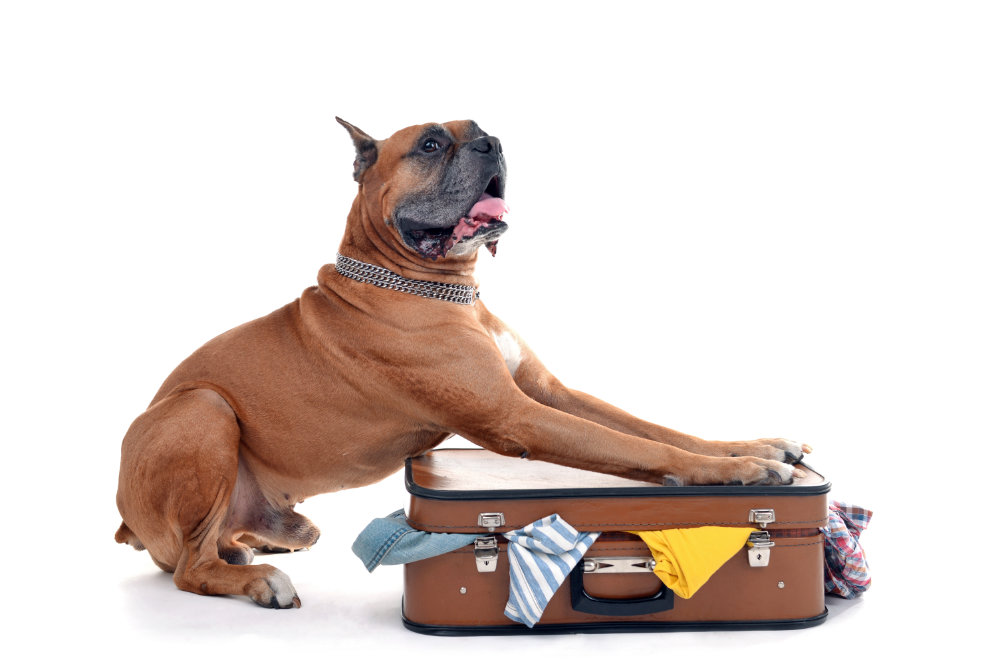
OUR VEHICLE
Our vehicle has easy access to all cages and double doors so that each pet can be taken out one by one with the assurance that they will not escape.
We have a geolocation system that allows the customer to see the location and speed of the vehicle at all times, in addition to observing the times and frequencies of stops.
Our vehicle has full type 2 license for international pet transport.
Specification includes
- Infrared cameras with monitor in the drivers cabin
- Real-time tracking using GPS geolocator
- Advanced system of temperature control
Our vehicle has an advanced temperature control system and we keep a logbook with temperature records of the trip made. We ensure that the temperatures inside the pet area are maintained in a range of 5ºC to 28ºC, with a tolerance of ± 5ºC depending on the outside temperature
OUr passengers
All our VIPets are transported in their own secure travel compartment. All compartments are equipped with non-spill water bowls and are wipe clean. They also have veterinary bedding which is waterproof and hypoallergenic. Cats are provided with a small litter tray. All VIPets are fed multiple times per day, walked every 4-6 hours and are checked continuously on the journey to ensure they are clean and happy and have plenty of water.
There are always two drivers, and they stay on the van, so our precious passengers are never left unattended.
We provide regular pup-dates with pictures sent from every walk and a video call once per day.
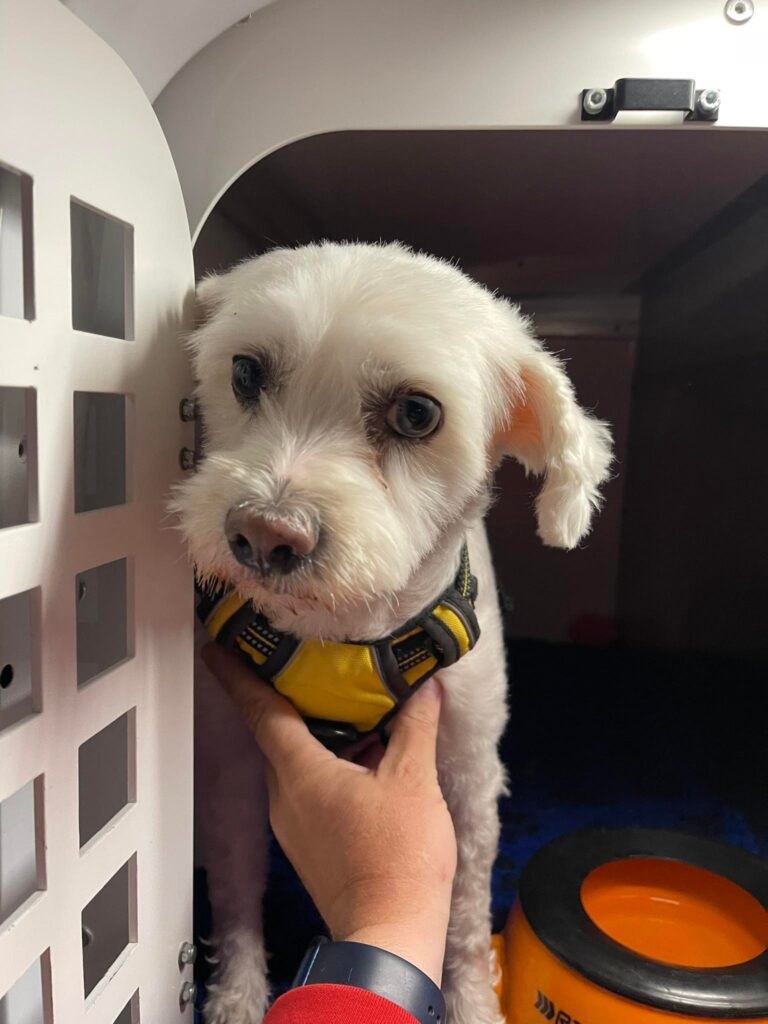
Our Happy Clients!
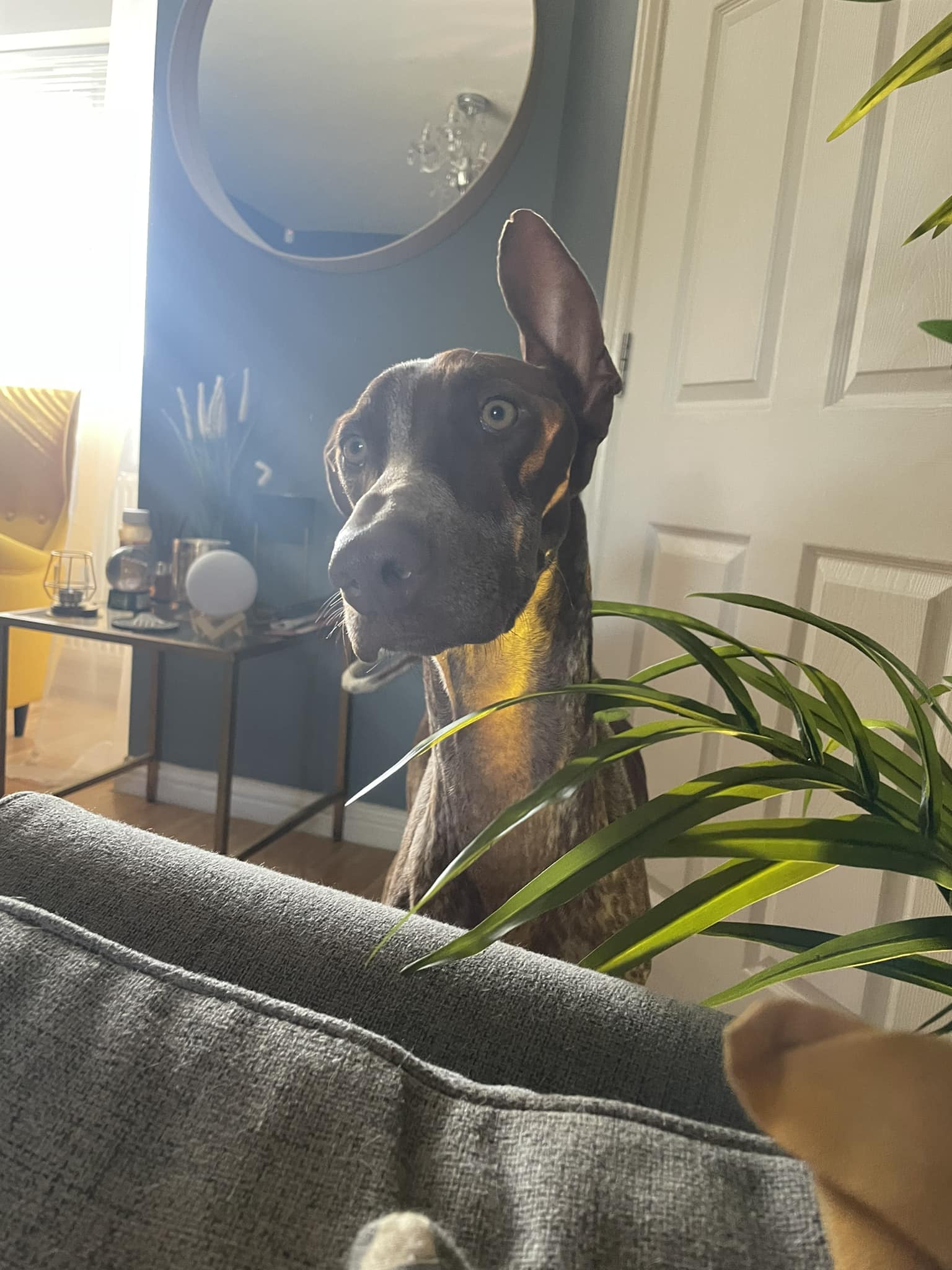
Election latest: The morning after the night before - fresh Rishi Sunak-Keir Starmer debate poll has very different result
Researchers at Savanta found Sir Keir Starmer beat Rishi Sunak by 44% to 39% in the first TV debate. Listen to the latest daily edition of Politics at Jack and Sam's as you scroll.
Wednesday 5 June 2024 10:25, UK
- General Election 2024
Election news
- Doubt cast on Tory tax claim by top civil servant
- Labour accuse Sunak of 'desperate lies' over claim
- Politics at Jack and Sam's: The Day... after the debate
- Second poll puts Starmer on top in TV debate
- Be in the audience for our election leaders event
- Campaigning takes a back seat as D-Day commemorations begin
- Live reporting by Faith Ridler
Expert analysis
- Sam Coates: Sunak and Starmer couldn't wait to tear into each other
- Ed Conway: Why caps on migrant numbers don't really work
- Matthew Thompson: The story behind Lib Dem battle bus icons
Election essentials
- Trackers: Who's leading polls? | Is PM keeping promises?
- Campaign Heritage: Memorable moments from elections gone by
- Follow Sky's politics podcasts: Electoral Dysfunction | Politics At Jack And Sam's
- Read more: Who is standing down? | Key seats to watch | How to register to vote | What counts as voter ID? | Check if your constituency is changing | Your essential guide to election lingo | Sky's election night plans
Politicians from across the House of Commons are arriving in Portsmouth today to commemorate the 80th anniversary of the D-Day landings.
Labour leader Sir Keir Starmer, Liberal Democrat leader Sir Ed Davey and veterans minister Johnny Mercer were among the early arrivals - with Rishi Sunak also expected to attend.
Sir Keir Starmer could be heading to Downing Street with the biggest majority for 100 years - according to the first polling projection by YouGov since the election was called.
The landmark projection, published by Sky News this week, has got lots of people reminiscing about 1997…
By Josephine Franks, news reporter and Sarah Taaffe-Maguire, business reporter
When Rishi Sunak moved into Number 10 two years ago, he was described as Britain's first hedge fund prime minister.
Sky's Economics and Data Editor Ed Conway wrote at the time that Mr Sunak's background makes for a CV unlike almost every other resident of Downing Street.
It was a career that started aged 21 at Goldman Sachs and saw him co-found a firm registered in the Cayman Islands.
But it is Mr Sunak's three years at hedge fund TCI straddling the 2008 financial crash that is now being revisited.
Both the Conservatives and Labour have been releasing "attack ad" videos in the general election campaign - and the prime minister's financial background is the subject of Labour's latest one.
You can read more from Sky News below:
Both the Starmer and Sunak campaigns agree: the first head-to-head of the election campaign was - in many ways - a difficult watch.
The two men have spent a fortnight on the campaign trail attacking one another from hundreds of miles apart. It was undoubtedly snippy.
Suddenly they were together in a room, able to do it in front of an invited audience - and they couldn't wait to tear into each other.
As a result they couldn't wait to bludgeon their opponent's pre-prepared lines, mock and cajole one another, often talking at the same time.
You can read more from Sam here:
A top Treasury civil servant wrote to Labour to warn them that the Tory assessment of their tax plans "should not be presented as having been produced by the civil service".
The letter, sent by Treasury permanent secretary James Bowler, could undermine Rishi Sunak's repeated claim last night that Labour's financial plans include a £38bn black hole.
The prime minister has claimed this would result in a £2,000 tax rise per household, alleging Labour's policies were costed by "independent Treasury officials".
Labour, however, has rubbished this claim as a "desperate lie".
It has now emerged that, in a letter to shadow chief secretary to the Treasury Darren Jones, a civil servant distanced himself from the Conservative analysis.
Mr Bowler said: "As you will expect, civil servants were not involved in the production or presentation of the Conservative Party’s document 'Labour’s Tax Rises' or in the calculation of the total figure used."
He added: "The £38bn figure used in the Conservative Party's publication includes costs beyond those provided by the Civil Service".
There's been rather a lot of mention today of one particular moment in last night's head-to-head between Rishi Sunak and Sir Keir Starmer.
In the debate, the prime minister claimed there's a £38bn black hole in Labour's plans for government.
Mr Sunak repeatedly alleged that this would result in a £2,000 tax rise for each British household.
Sir Keir initially failed to challenge the accusations, but eventually called it "nonsense" and "absolute garbage", saying his pledge to invest in green projects would result in cheaper energy bills.
And Labour frontbencher Jonathan Ashworth today told Sky News that Mr Sunak had "lied" about Labour's tax outlook.
He said: "I think last night, what was exposed was just how desperate Rishi Sunak has become, because he lied about Labour's tax plans.
"What he said last night about Labour's tax plans is categorically untrue. Labour will not put up income tax, not put up national insurance, will not put up VAT.
"And I think what we showed last night with Rishi Sunak, what we saw last night was just how desperate he becomes.
"What desperate people do, is they lie."
Keith Brown, the deputy leader of the SNP, has insisted that last night's televised debate was "not for viewers in Scotland".
Yesterday, First Minister John Swinney insisted that he should have been invited to take part in the debate, the first of the general election period.
Mr Brown echoed his view, saying: "There wasn't one mention of Scotland.
"The largest party in Scotland - the third largest party in the House of Commons - was excluded from it, and of course the really important things for Scotland... weren't really covered.
"It really was not relevant, or helpful or instructive for the people of Scotland."
"Neither of them are blessed with natural charisma."
This rather damning assessment of both Rishi Sunak and Sir Keir Starmer - the UK's choice of future prime minister - focuses on their speech and body language, not how they might lead the country.
The leaders of the two main parties face weeks of interviews, speeches, and walkabouts as part of their general election campaigns.
Ahead of their first live TV debate, Sky News spoke to Paul Boross, a business psychologist and body language expert who has coached several politicians and celebrities, and Elizabeth McClelland, forensic voice, speech, and language analyst, about the gestures and verbal characteristics that offer an insight into who the two frontrunners really are.
You can read more from our news reporter Lara Keay below...
Sky News' deputy political editor Sam Coates and Politico's Jack Blanchard with their guide to the election day ahead.
This is day 14 of the campaign. Jack and Sam discuss last night’s debate in Salford, the upcoming 80th anniversary of the D Day landings, and Welsh First Minister Vaughan Gething faces a motion of no confidence.
Email Jack and Sam: [email protected]
👉 Tap here to follow Politics at Jack at Sam's wherever you get your podcasts 👈
The Sky News live poll tracker - collated and updated by our data and forensics team - aggregates various surveys to indicate how voters feel about the different political parties.
See the latest update below - and you can read more about the methodology behind the tracker here .
Be the first to get Breaking News
Install the Sky News app for free


IMAGES
VIDEO
COMMENTS
Bringing pets into Great Britain: pet passports, Great Britain pet health certificates, microchipping, rabies vaccinations, travelling with assistance dogs.
Dogs, cats, and ferrets must be individually identified by an ISO compliant (11784 and 11785) microchip. ... If there has not been a lapse in the rabies vaccination of the pet, the pet does not have to wait 21 days to travel to the UK after the booster vaccination.
Bringing cats to the UK. The change to the Pet Travel Scheme may also encourage well-meaning cat lovers to bring cats home from holiday; many are affected by the plight of animals abroad, particularly when they witness first-hand the poor conditions that some of these animals are in and naturally they want to do something to assist them.
Go to GOV UK to check if there have been any changes to pet immigration. 1# Make Sure That Your Pet is Allowed. Unfortunately, not all pets are considered "pets" when it comes to international air travel. Most airlines will also only accept cats, dogs, and ferrets as pets that can travel on their planes.
Explore key UK pet import requirements for dogs and cats, including rabies vaccination, microchipping, and travel tips. ... Commercial vs. Non-Commercial Pet Travel. Pet owners must travel to the UK within five days of their pet's arrival to avoid the move being labeled as a "commercial" shipment. This is often called the "5-day rule" and ...
Pet Travel Scheme. If you're entering the UK, your dog must meet the requirements of the Pet Travel Scheme offered by the UK Department for Environment, Food & Rural Affairs (DEFRA). ... It allows cats and dogs to travel between some countries and UK airports avoiding quarantine. If you're travelling to a different country, please check with ...
UK pet passport for dogs, cats and ferrets will usually contain those listed 1-6 at minimum. Those listed 7-10 are potential requirements that your pet may need, if you are traveling from a high-risk rabies country, or if you are traveling with other pet species. We will go into more detail below.
For longer road trips, you should take the following to ensure your cat has everything they may need: cat carrier and soft bedding. food and bottled water. pet bowls. litter box, familiar litter and waste bags. puppy pads (to line the carrier or place under a blanket) pet-safe cleaning wipes and disinfectant. cat toys.
The Pet Travel Scheme, known as PETS, has been in effect in the UK for more than 15 years. It's a system that permits pet travel to the UK. Dogs, cats and even ferrets can enter or re-enter the UK from qualified EU countries and non-EU "listed" countries. Listed countries include named non-EU countries in Europe and elsewhere.
The Heathrow Animal Reception Center (HARC) charges £260 per AWB. £177 to transport your pet to the quarantine station. £83 to collect your pet from the aircraft. Each additional pet on the same AWB is £41. The Manchester Animal Reception Center charges £100 per pet, plus an import fee of £0.165/kg with a minimum of £36.
The fees are also extremely high to fly with my cat into the UK (at least $400-600). I am looking at British/American Airlines, DELTA, and Lufthtansa. However, I have been reading other people's stories where they have flown into Paris (where cats can fly in the cabin) and travel to London that way.
Hello! I have been dealing with this exact issue, cat travel from us to UK for the past year and 3 months. The 21 day rule post most recent rabies vaccine is the guide for dogs, not cats. When looking online for the correct paperwork, make sure you have selected the cat section and not the dog section. The requirements do change.
No, you need to take a special train that carries vehicles. Those are the only ones that carry "freight" and cats are apparently in this category. More detail on that in this gov.uk page about sea and rail routes. In the end, we chose to pay the ~500€ ticket and fly the cat from Athens to London as cargo.
The Pet Travel Scheme permits pet travel to the UK. Dogs, cats, and ferrets can enter or re-enter the UK from qualified EU countries and non-EU "listed" countries. These listed countries include some non-EU countries in Europe and elsewhere in the world. Pet travel from the USA, Canada, Mexico, Australia, and New Zealand are also included.
August 9, 2023. Taking your cat on the Eurotunnel is very straightforward. The Channel Tunnel is a simple and fast way to travel between the the U.K. and France. The Eurotunnel shuttle train runs between Folkestone and Calais 24 hours of the day and 365 days a year. The journey takes around 35 minutes.
PetAir UK can offer as much or as little help as you would like with cat flights - just ask. PetAir is run by qualified vets who, combined with top qualifications, provide a stress-free pet courier service. The team are made up of a high proportion of vet nurses and animal loving women and men. We are IATA and IPATA certified.
The only new requirement for travel to the EU is the use of a certificate, rather than a pet passport: Ensure their dog, cat or ferret is microchipped. Ensure that their dog, cat or ferret is ...
Cats and dogs do not require a permit to enter the U.S., they do not require a rabies vaccination either, as the UK and Ireland are rabies free. You should however, get a health certificate from your veterinary stating that your pet is fit and healthy to travel. You should also contact your airline and the respective State Department of ...
Only certain airlines are permitted to carry dogs, cats and ferrets into the UK under the Pet Travel Scheme, and none of them are permitted to bring in animals within the aircraft cabin. The exception to this rule is if you are travelling with an Assistance Dog. Whilst looking into a solution for Brussels, I discovered that flights into Charles ...
Paw2Door was born from her sister company For the Love of Dogs and Cats, which was set up to transport adopted rescue dogs and cats from Spain to the UK.. Having transported over 5000 pets and rescues, and with almost 600 5* reviews on Facebook, we are the No1 rated transport company in Spain.
We cross the English Channel using the Eurotunnel Pets can travel on trains for free in the UK. UK train travel information on dogs, cats and luggage can be found at nationalrail. With the Le Pet Express van, pet owners travel alongside their dog or cat through the Eurotunnel to both the UK and France. You stay with your pet the whole journey.
Good morning. We are bringing live updates as firefighters have been battling a blaze at the disused Fat Cat bar in Northampton town centre. The county's fire and rescue service was called to ...
General Election campaigning is to take a back seat for a couple of days, as commemorations for the 80th anniversary of D-Day begin. Both Rishi Sunak and Sir Keir Starmer are due to attend a ...
CEO Jensen Huang declared the beginning of a new industrial revolution where Nvidia was helping turn $1 trillion of data centers into "AI factories," as its already meteoric stock topped $1,000.